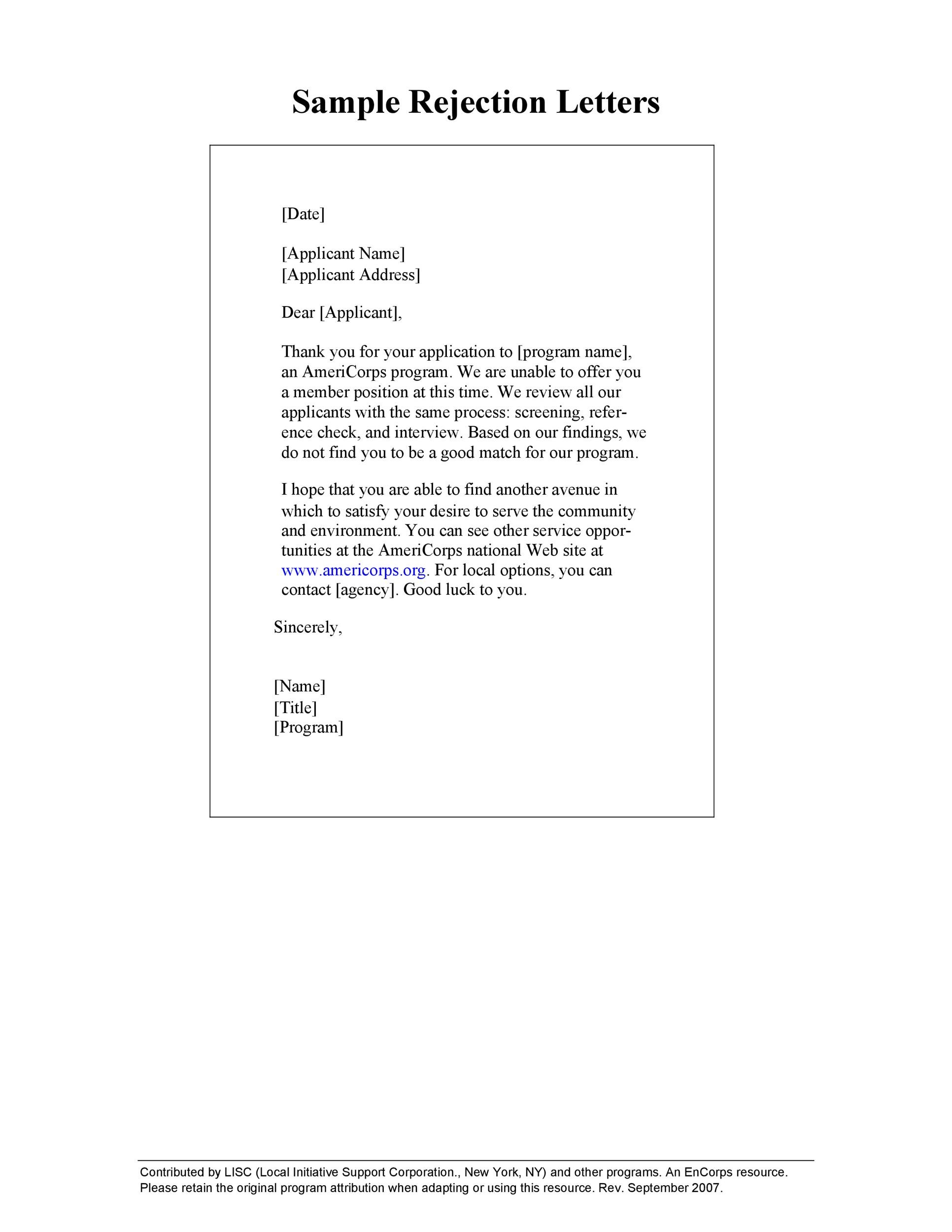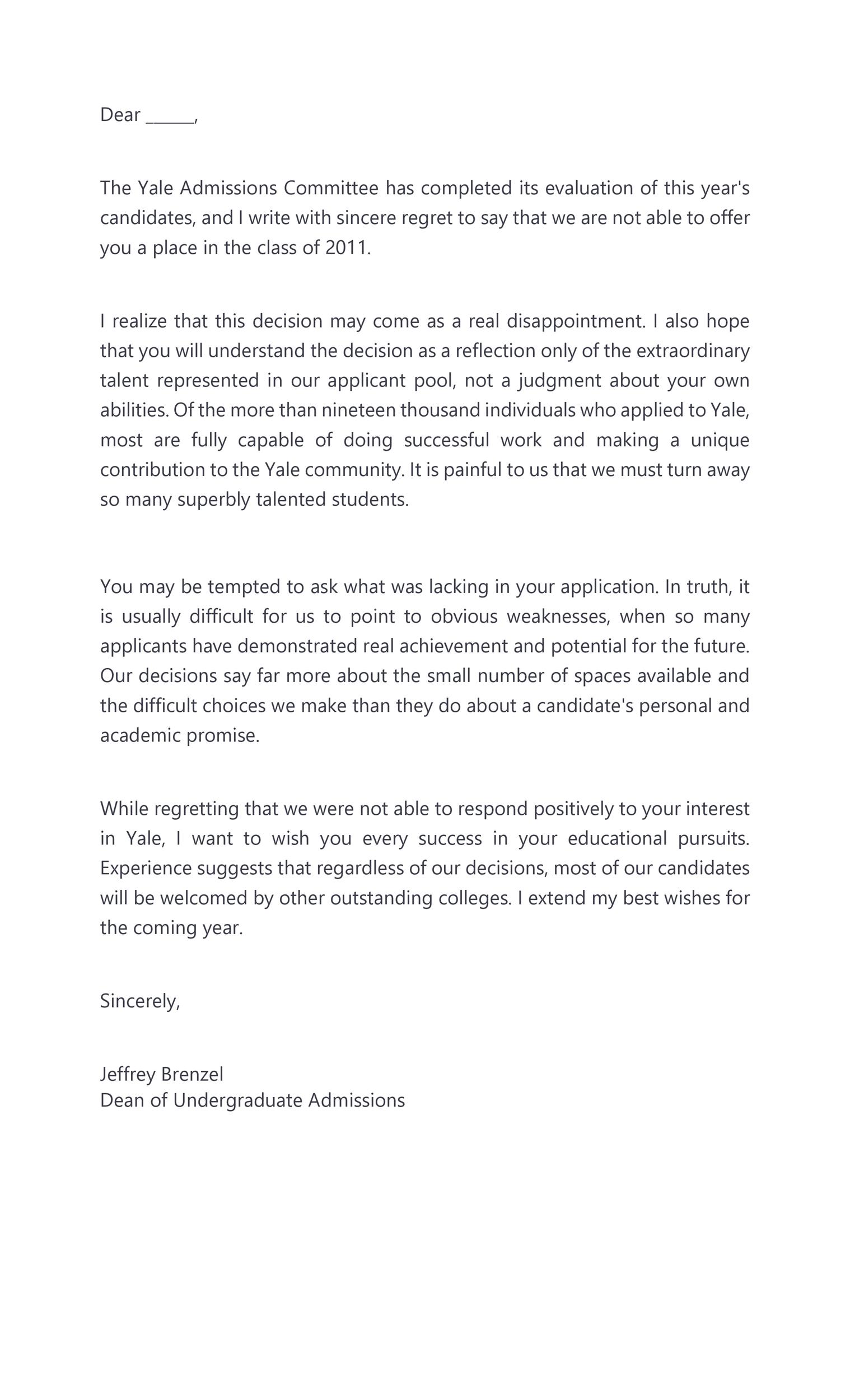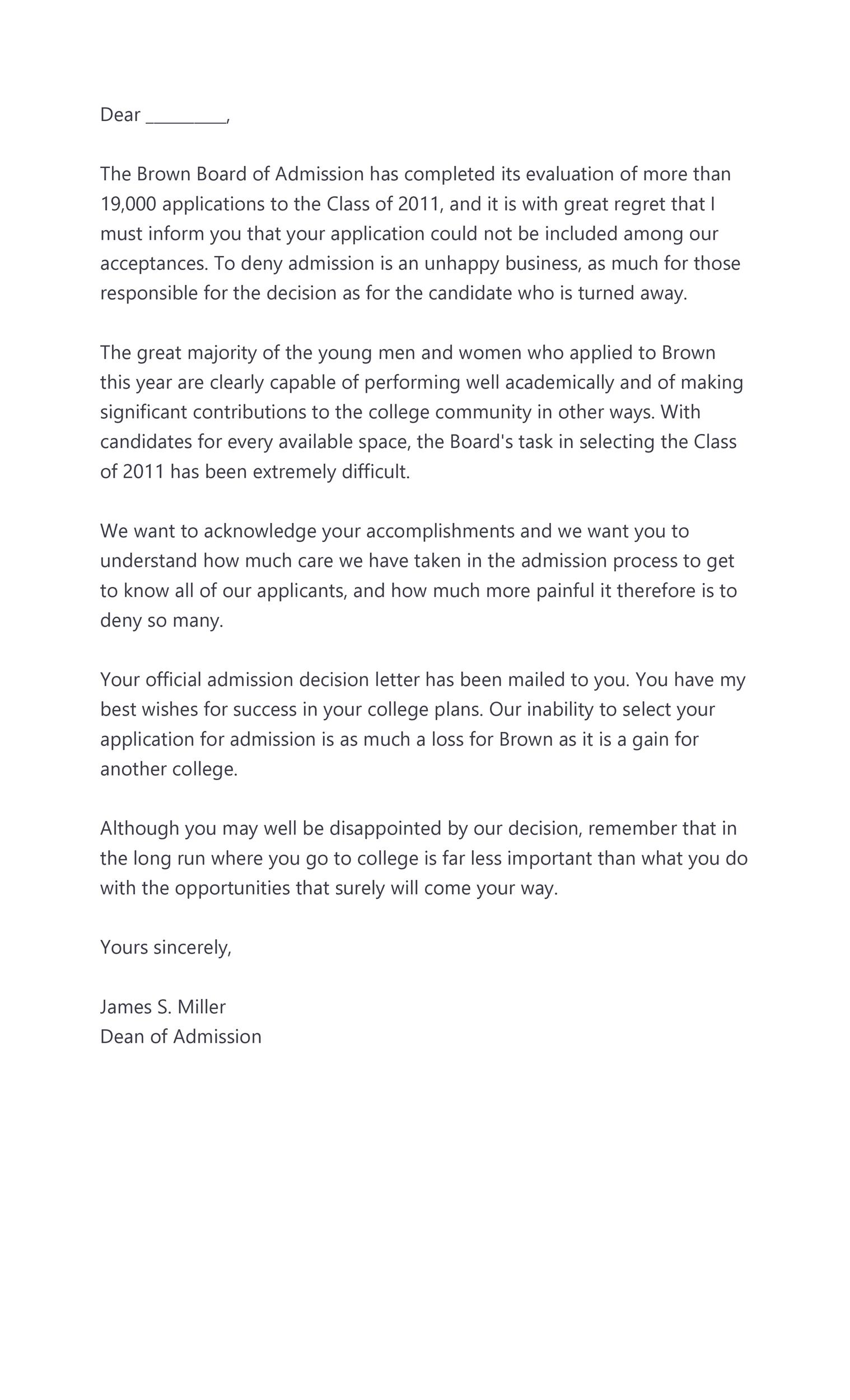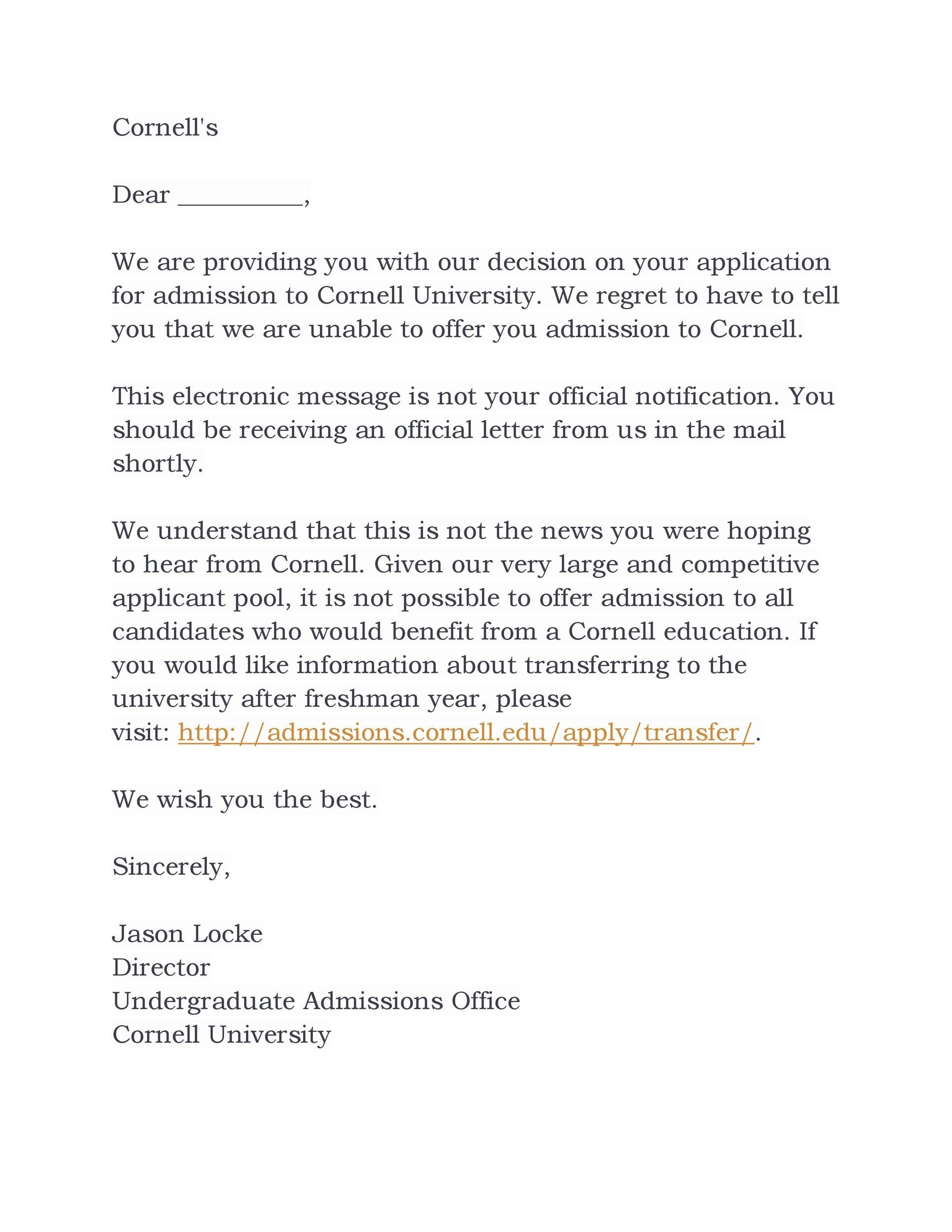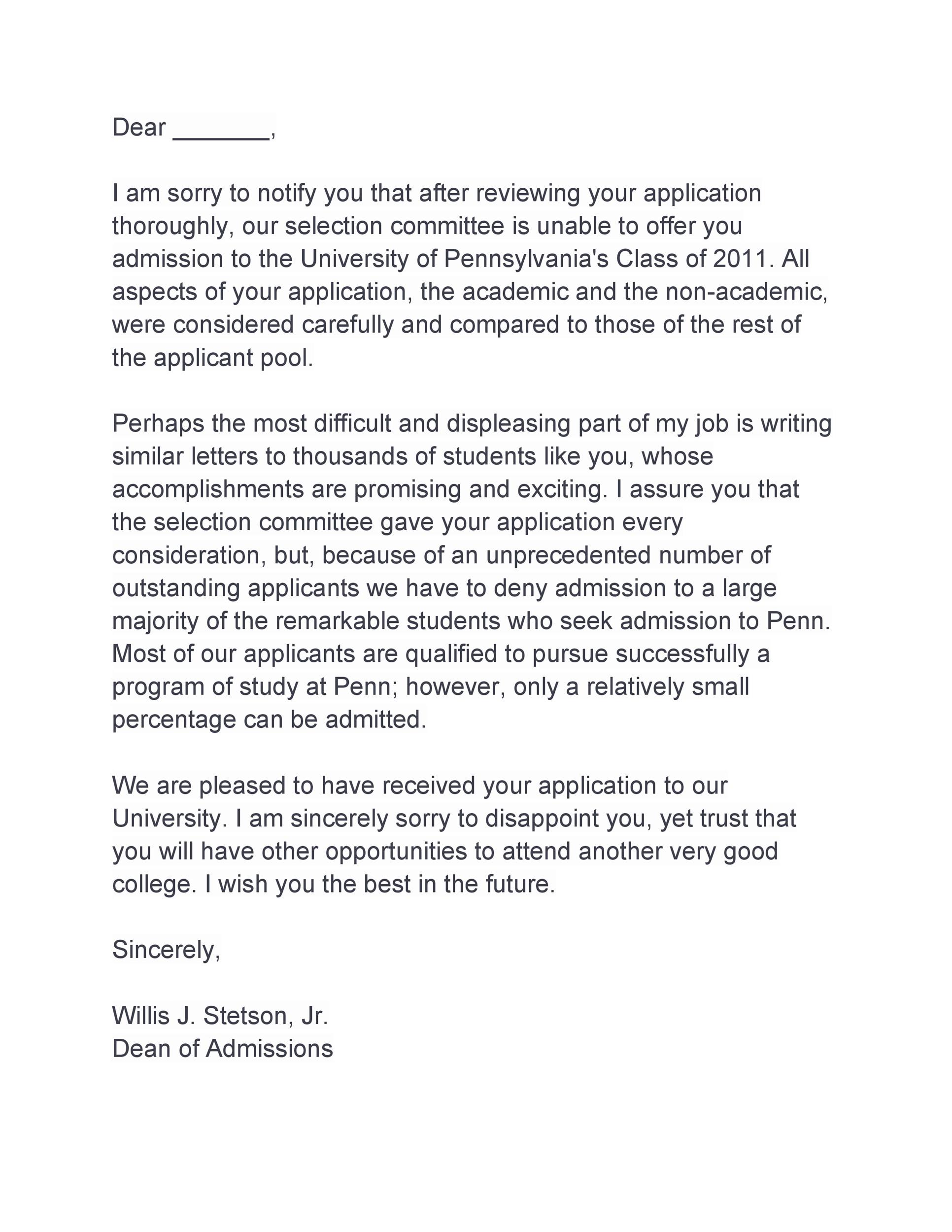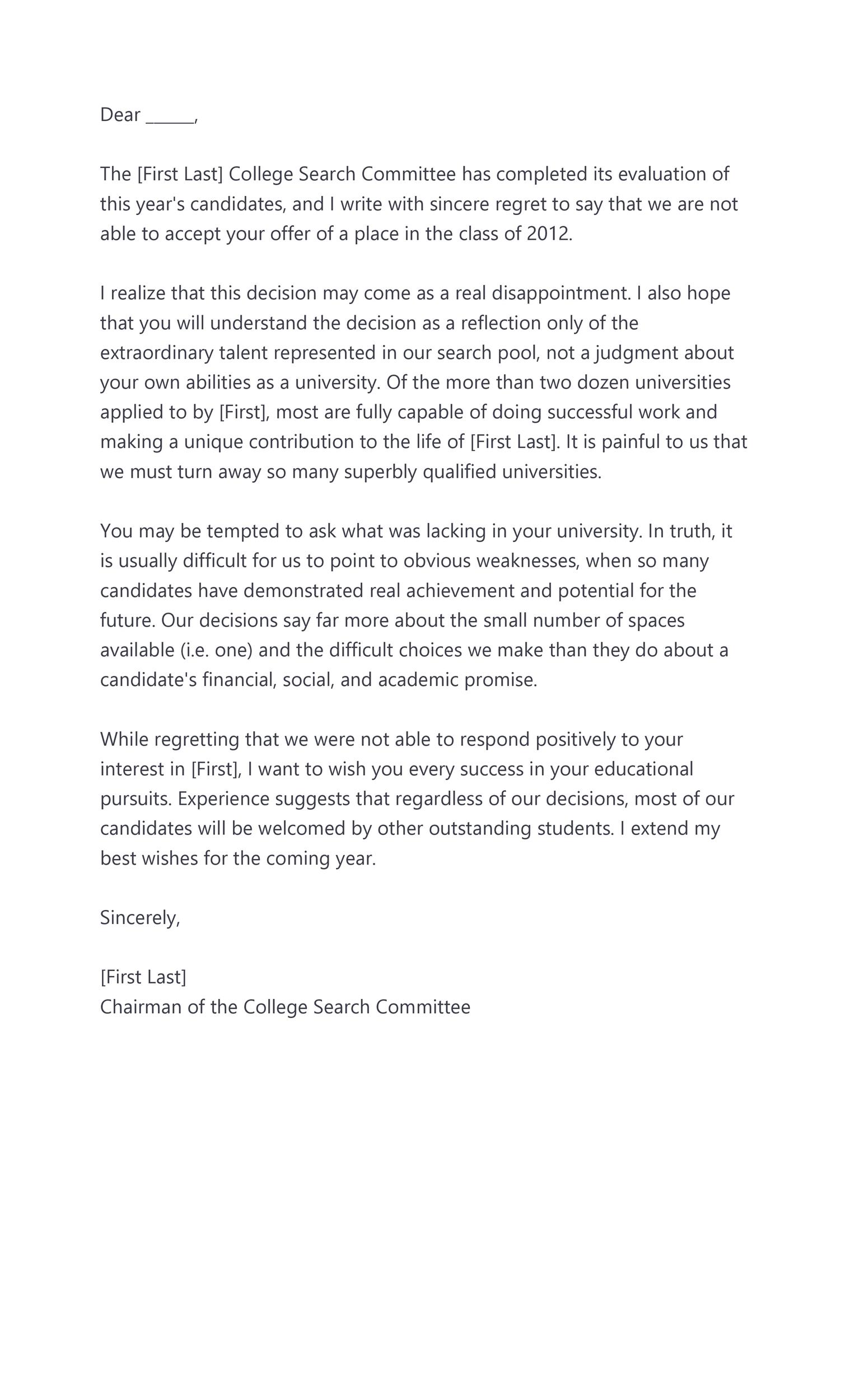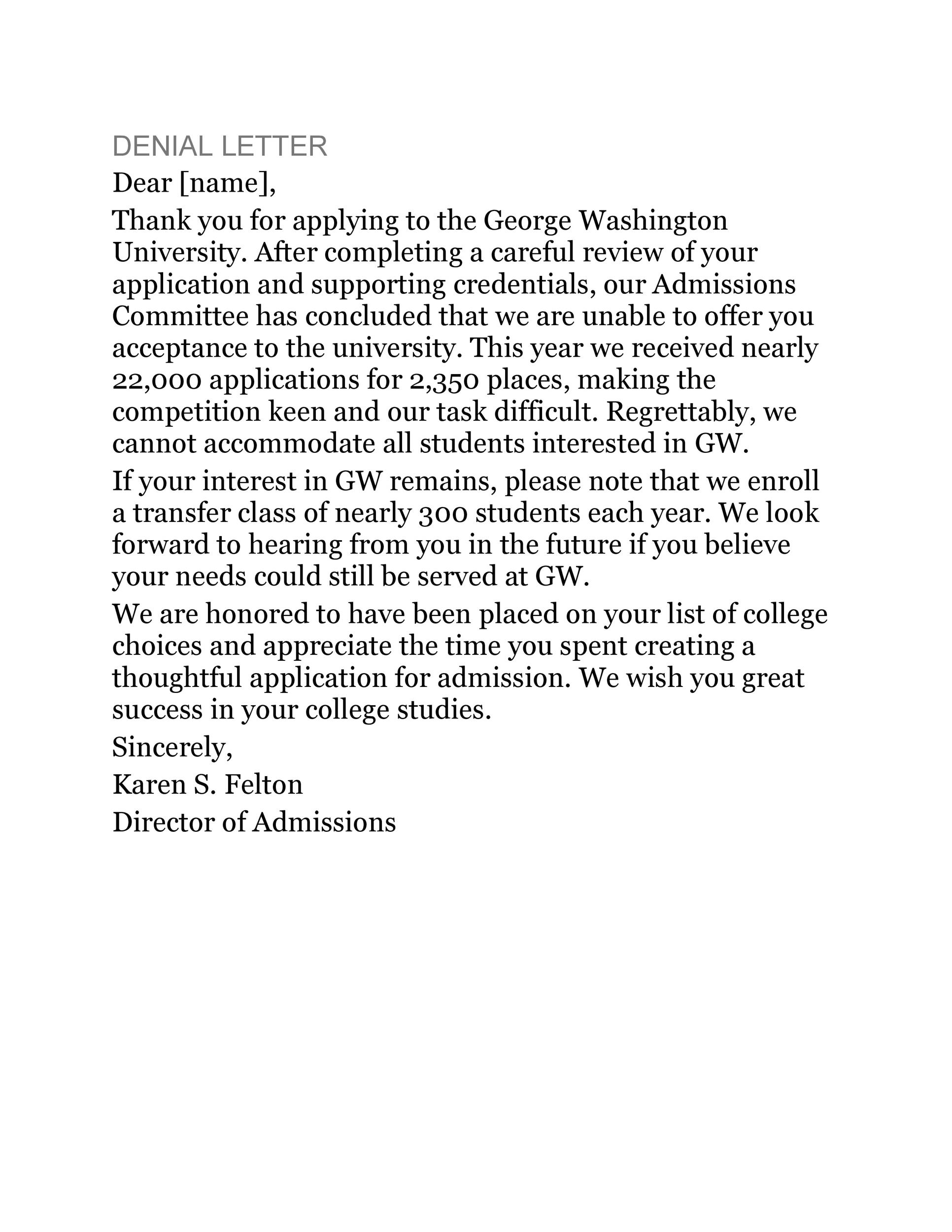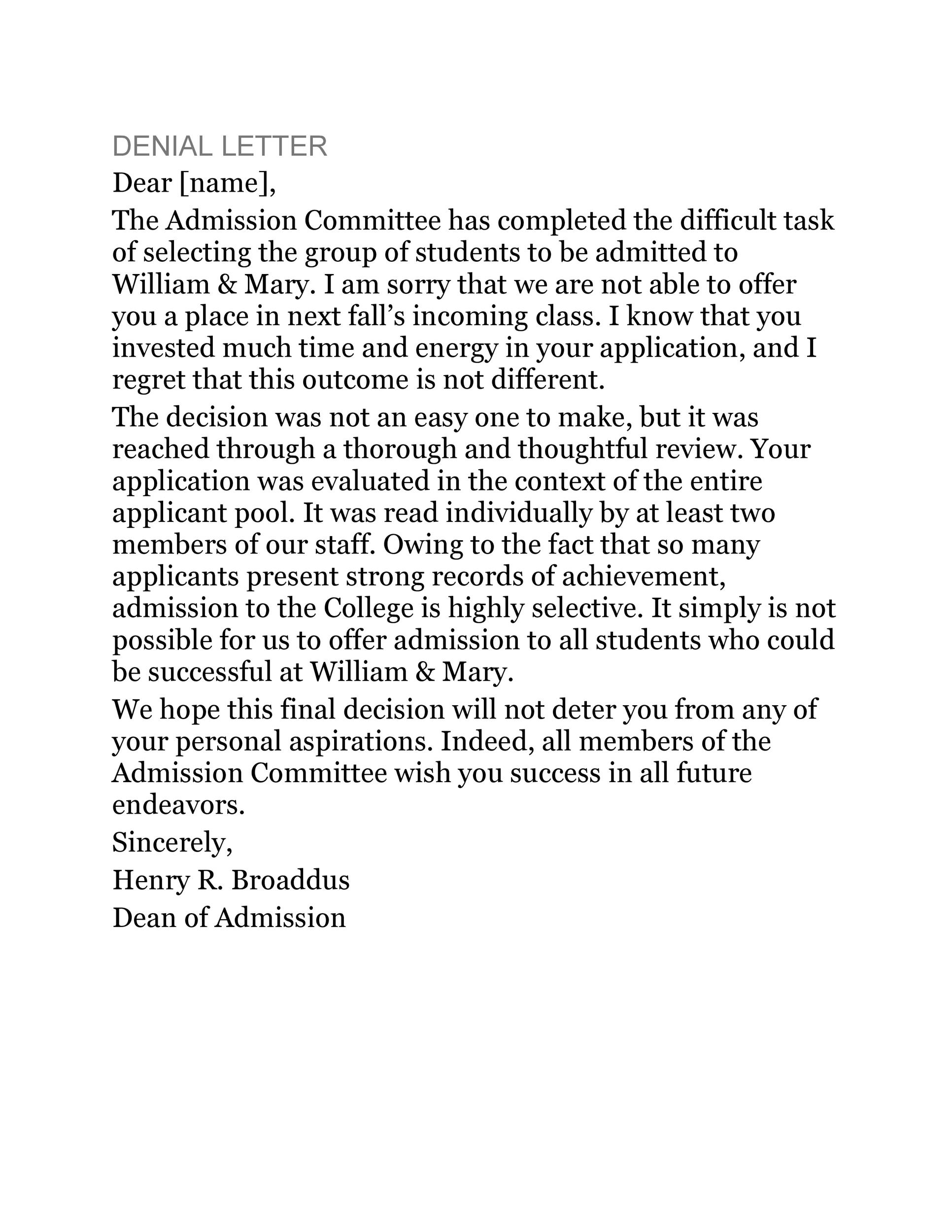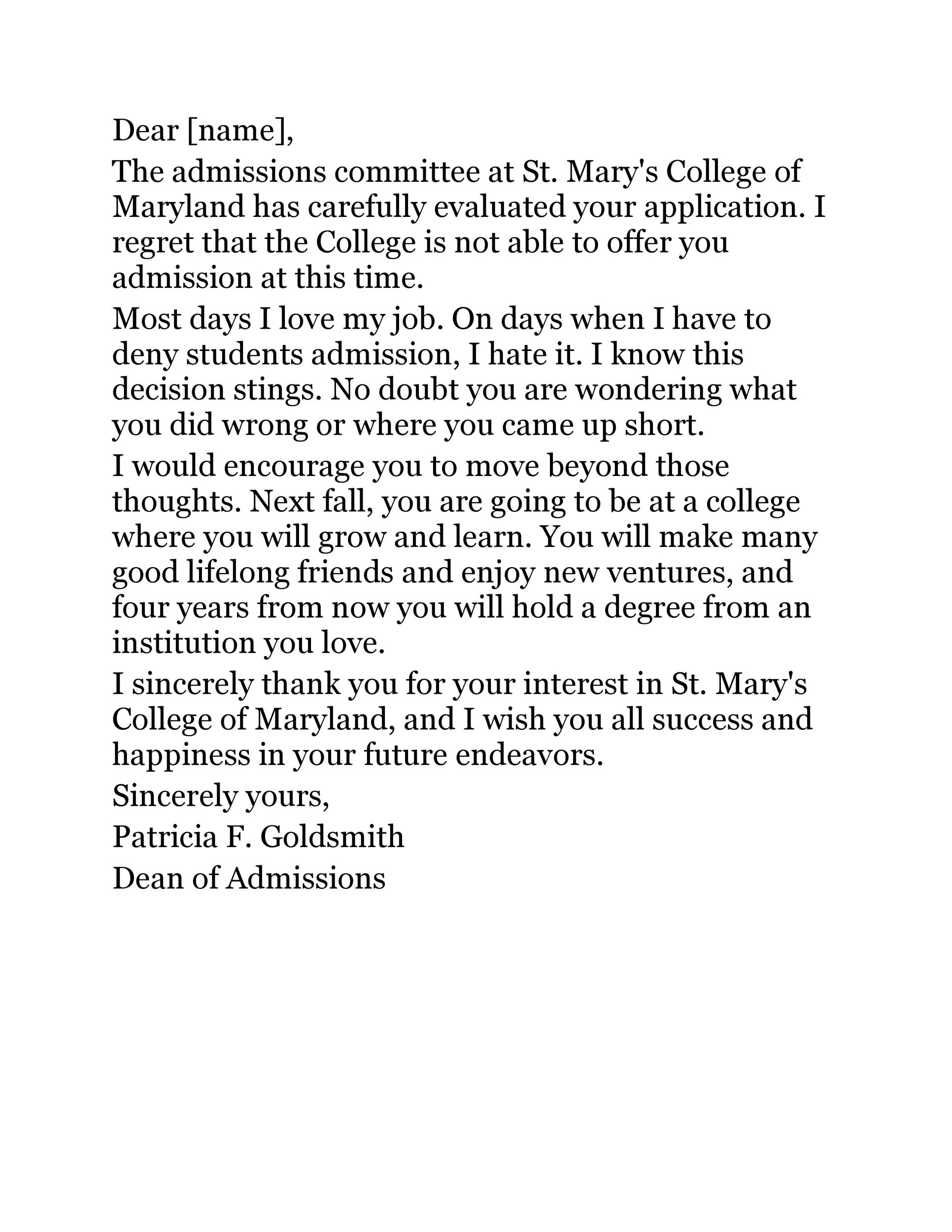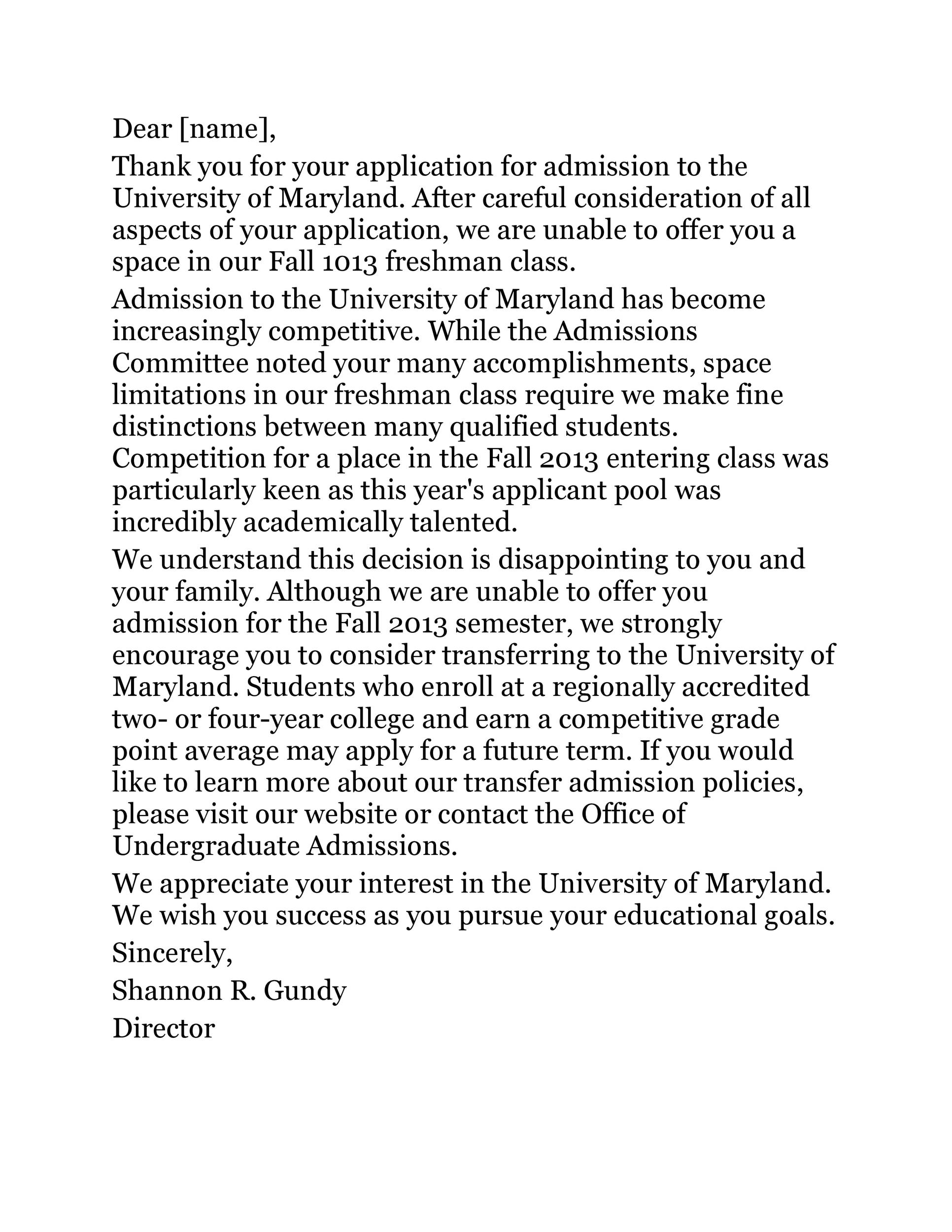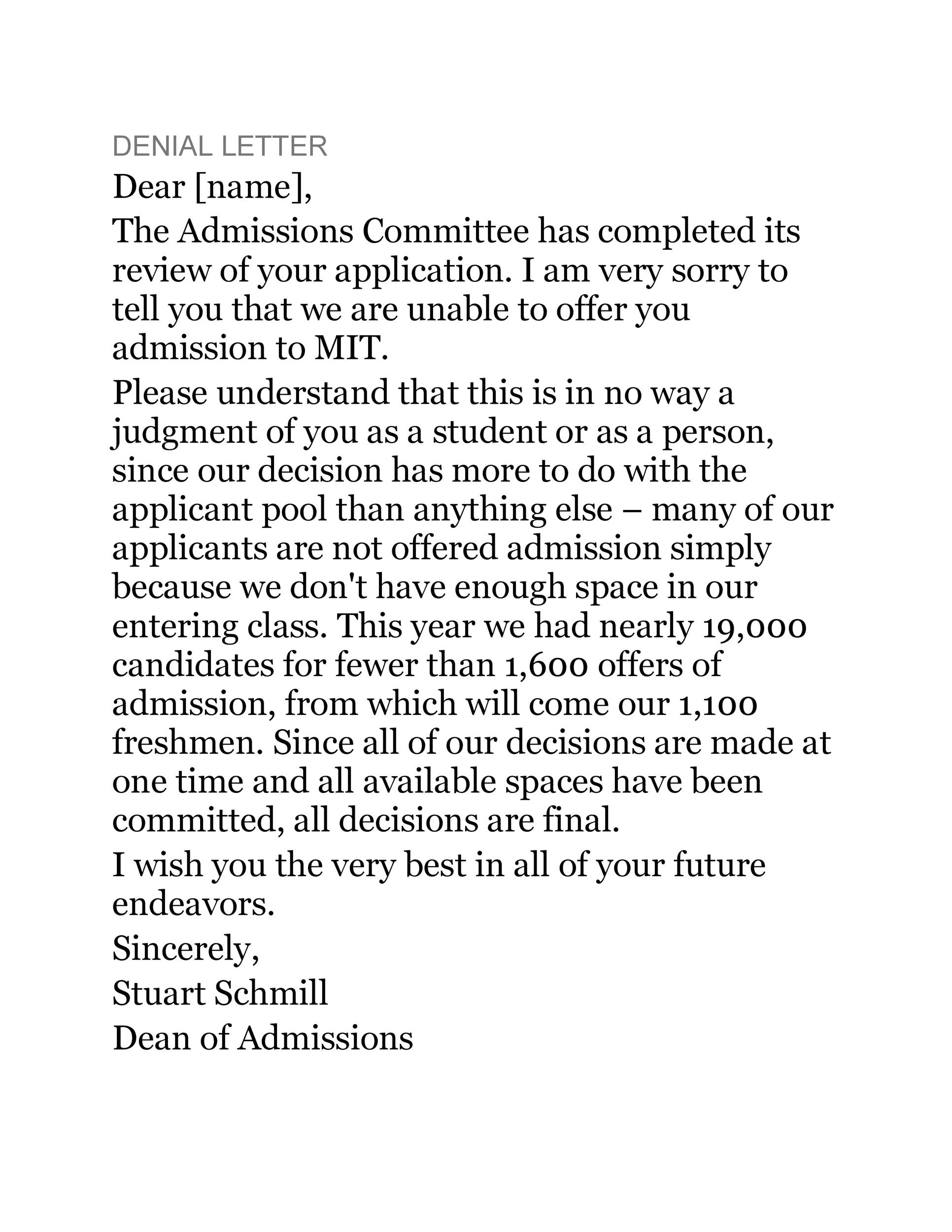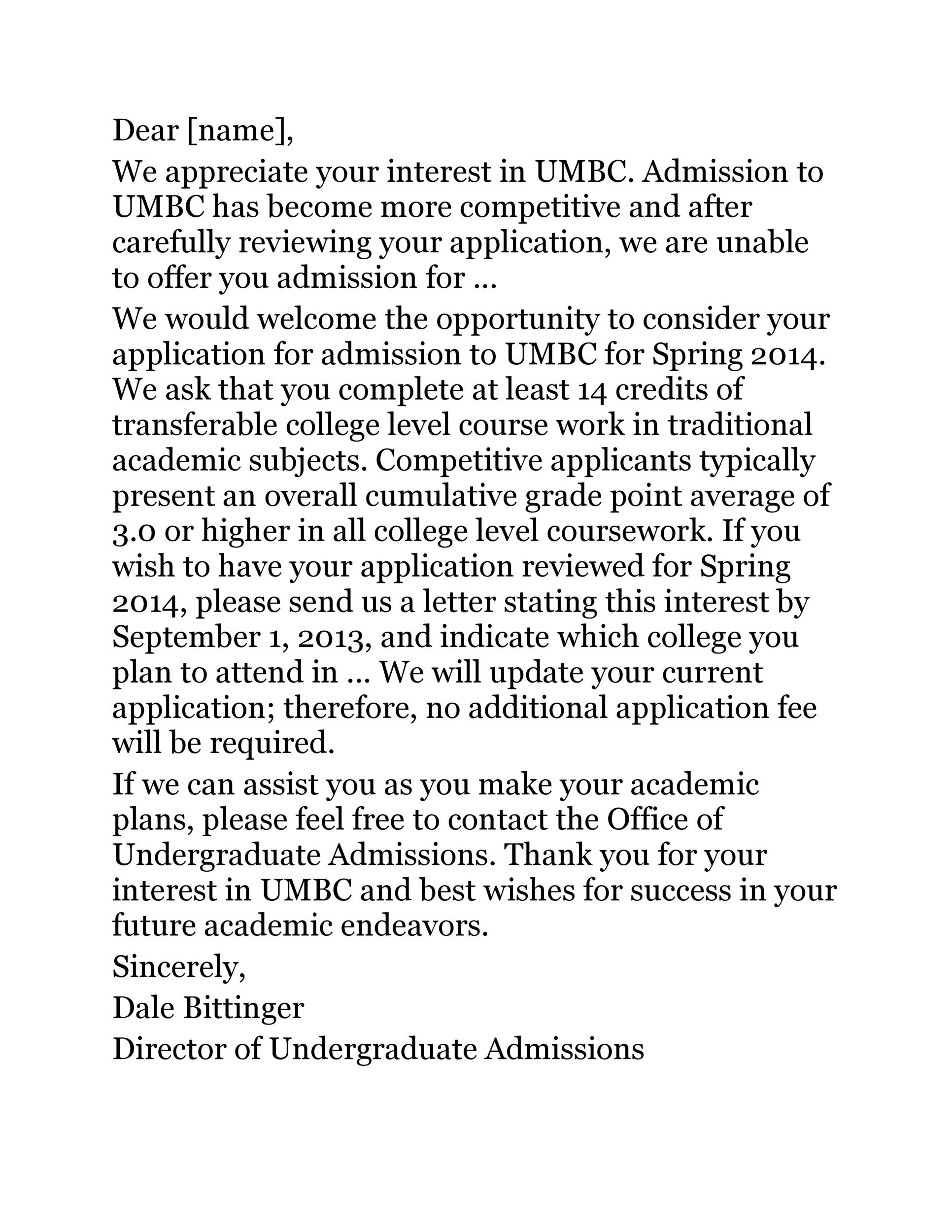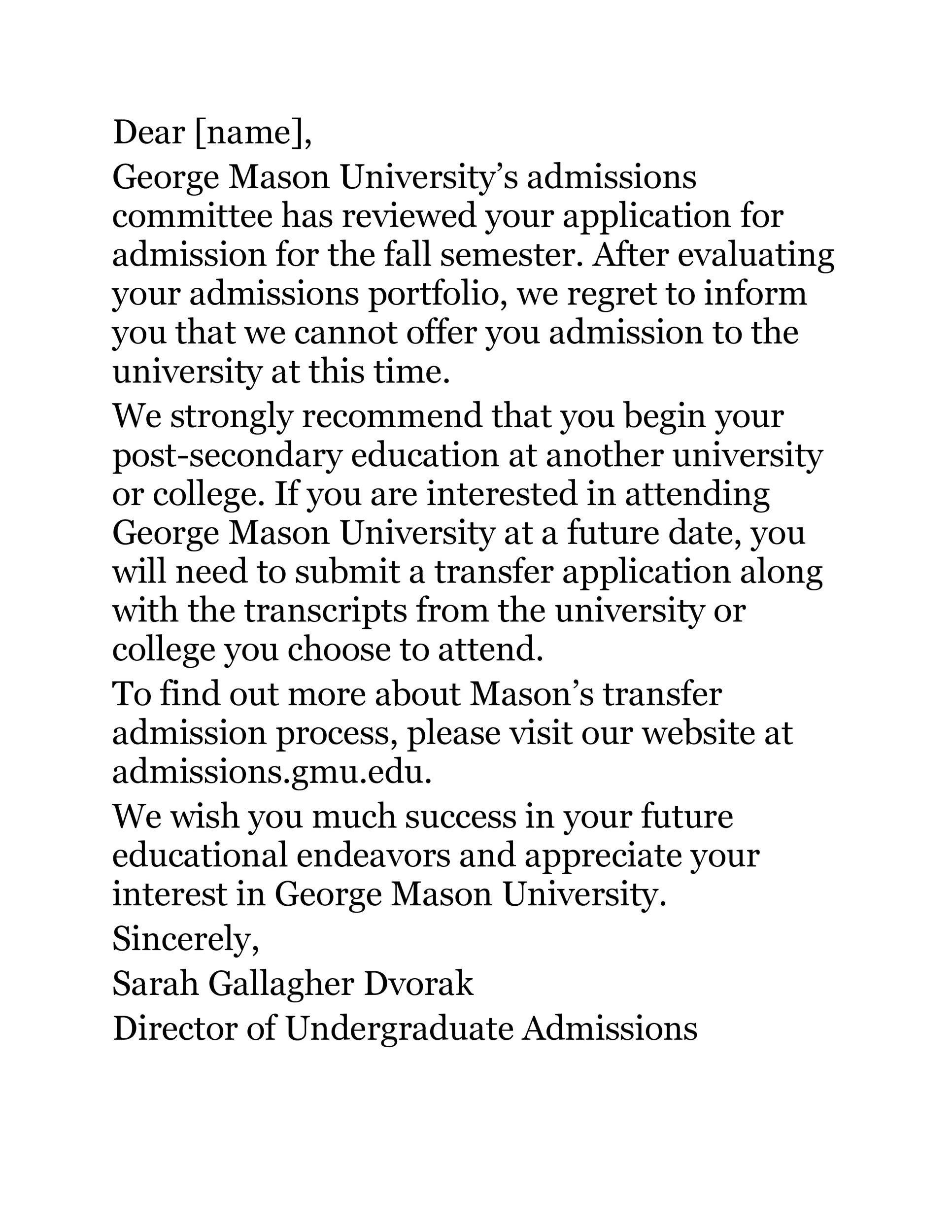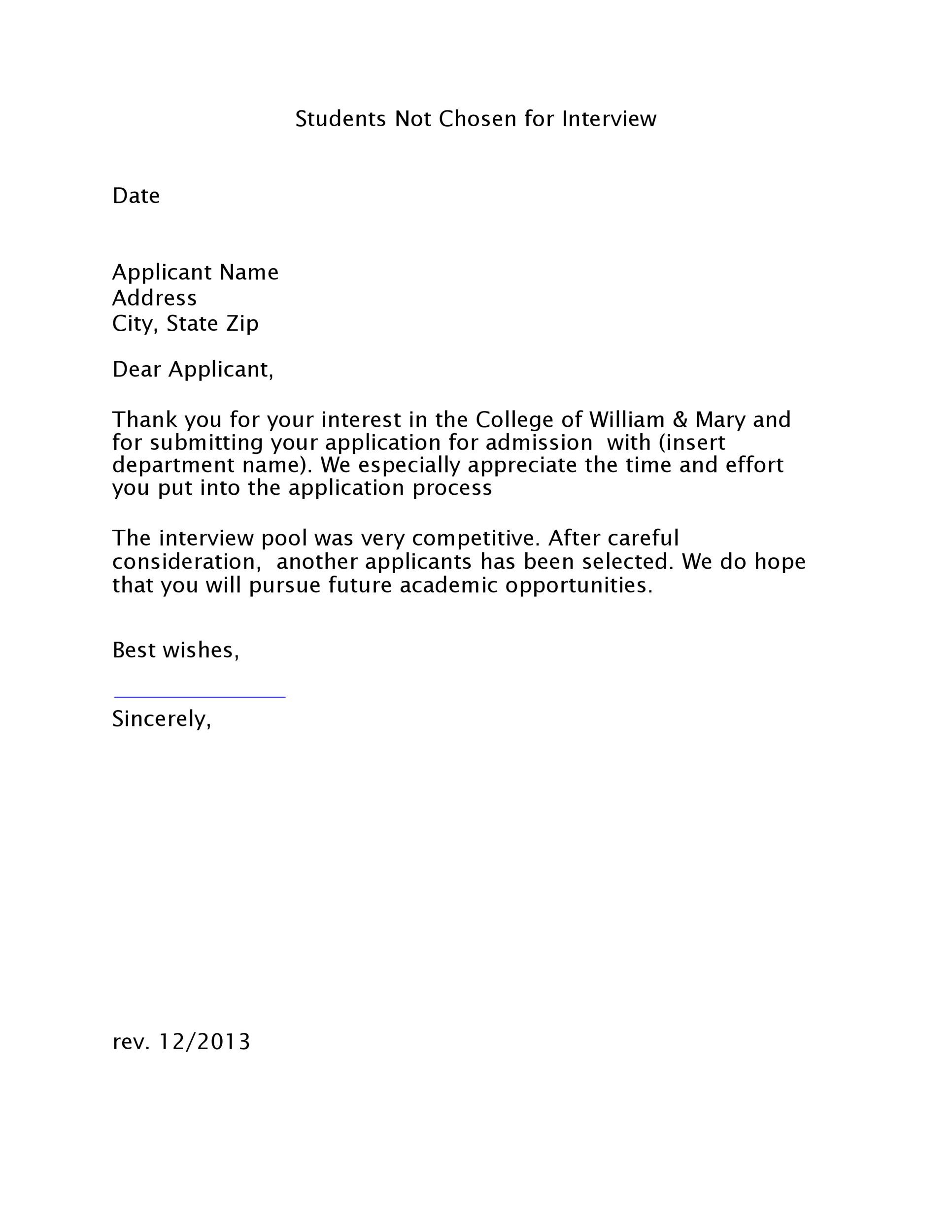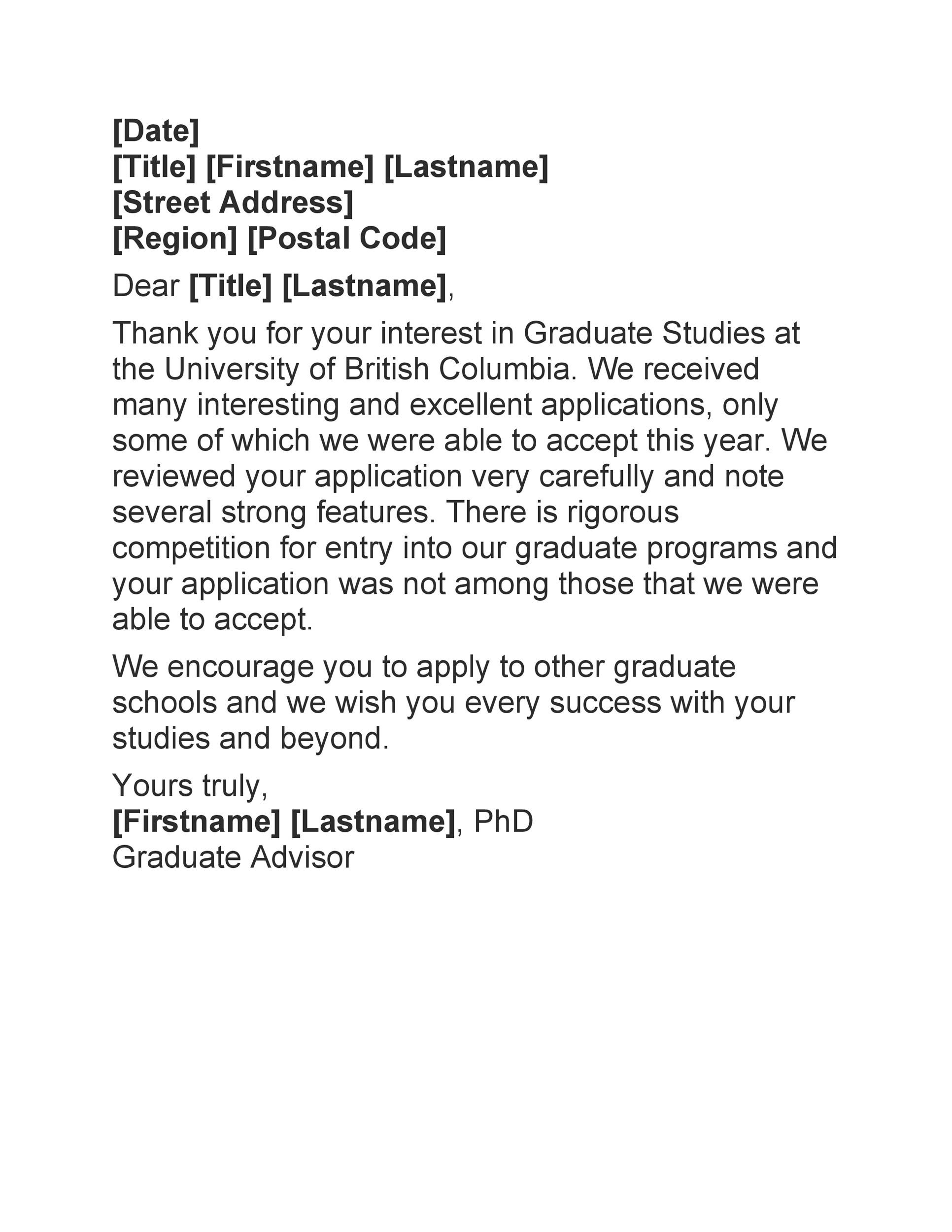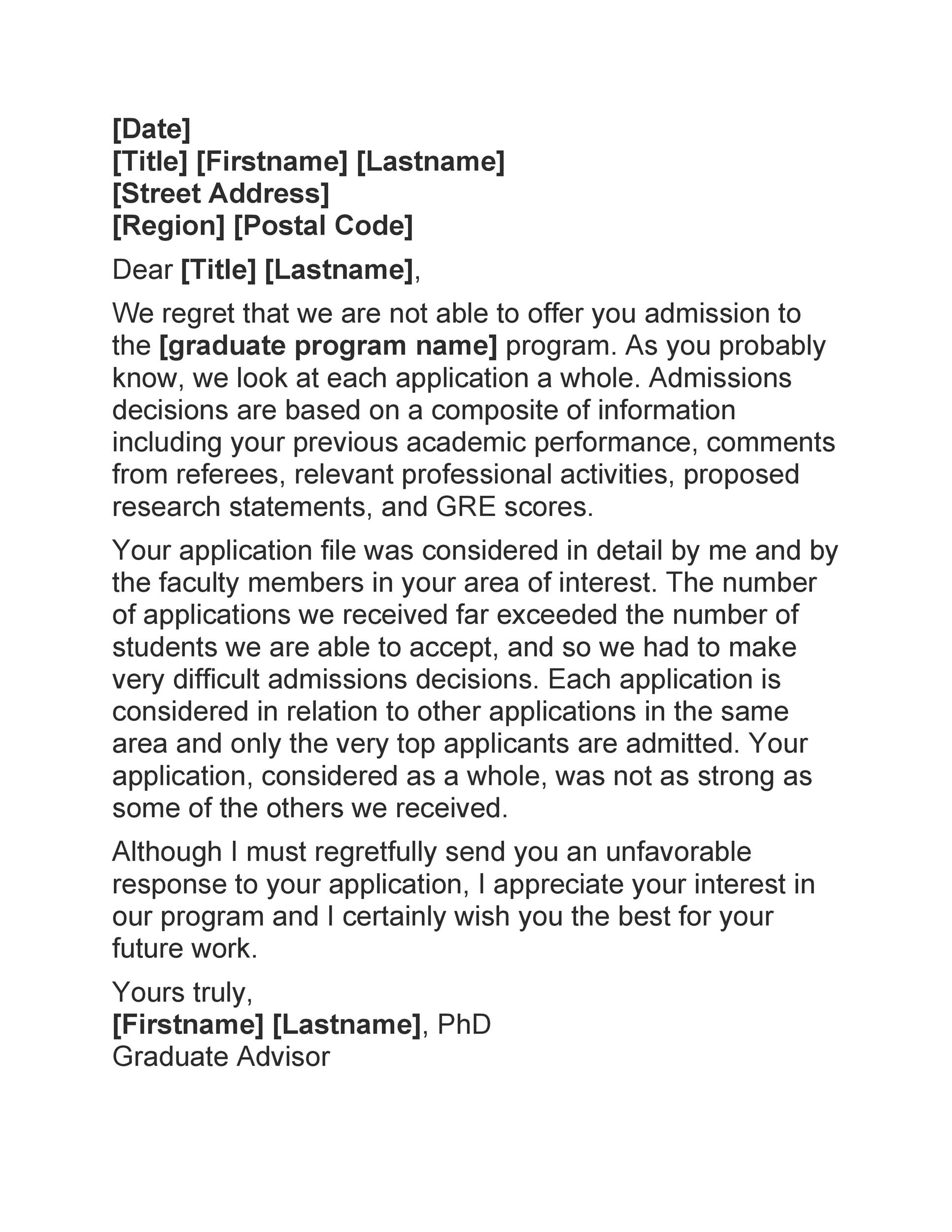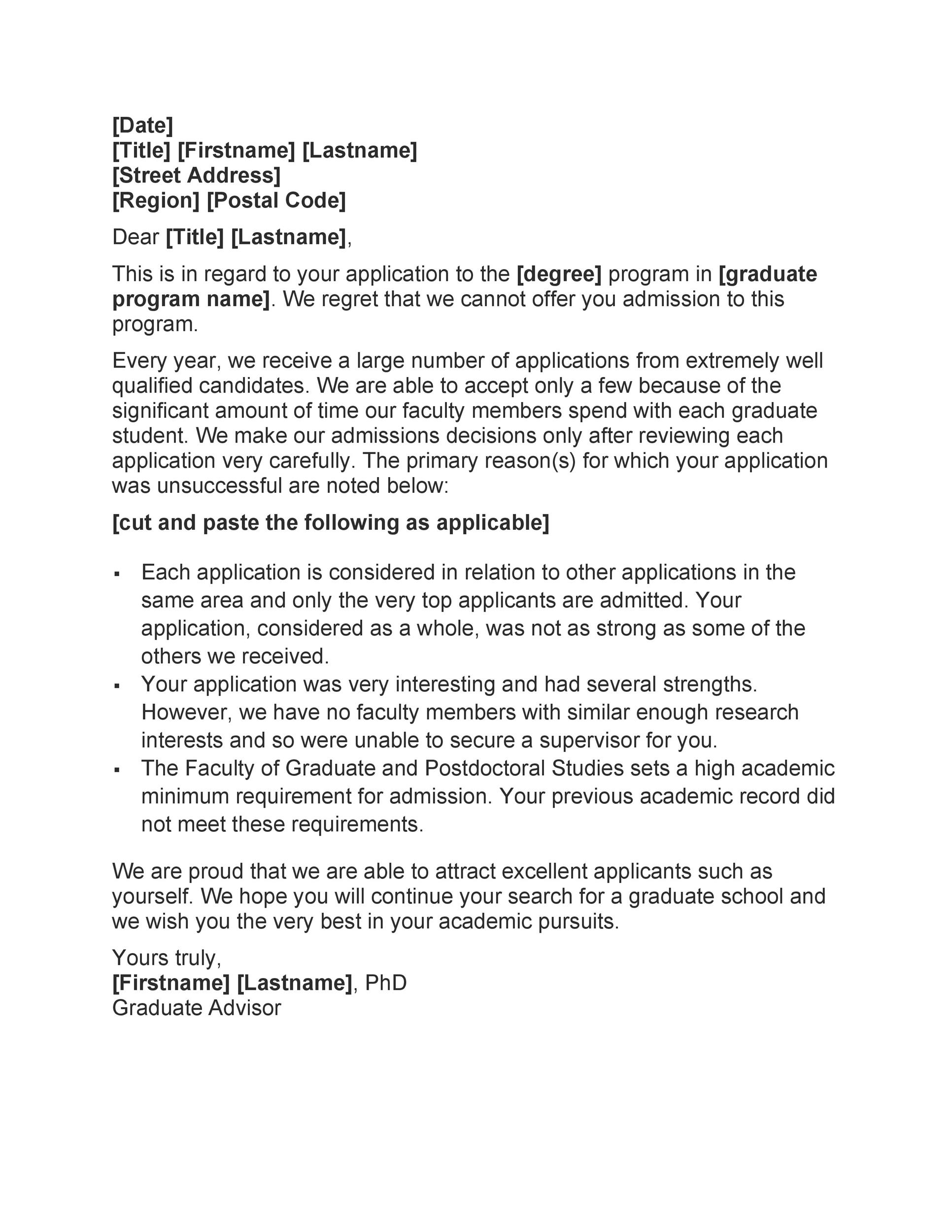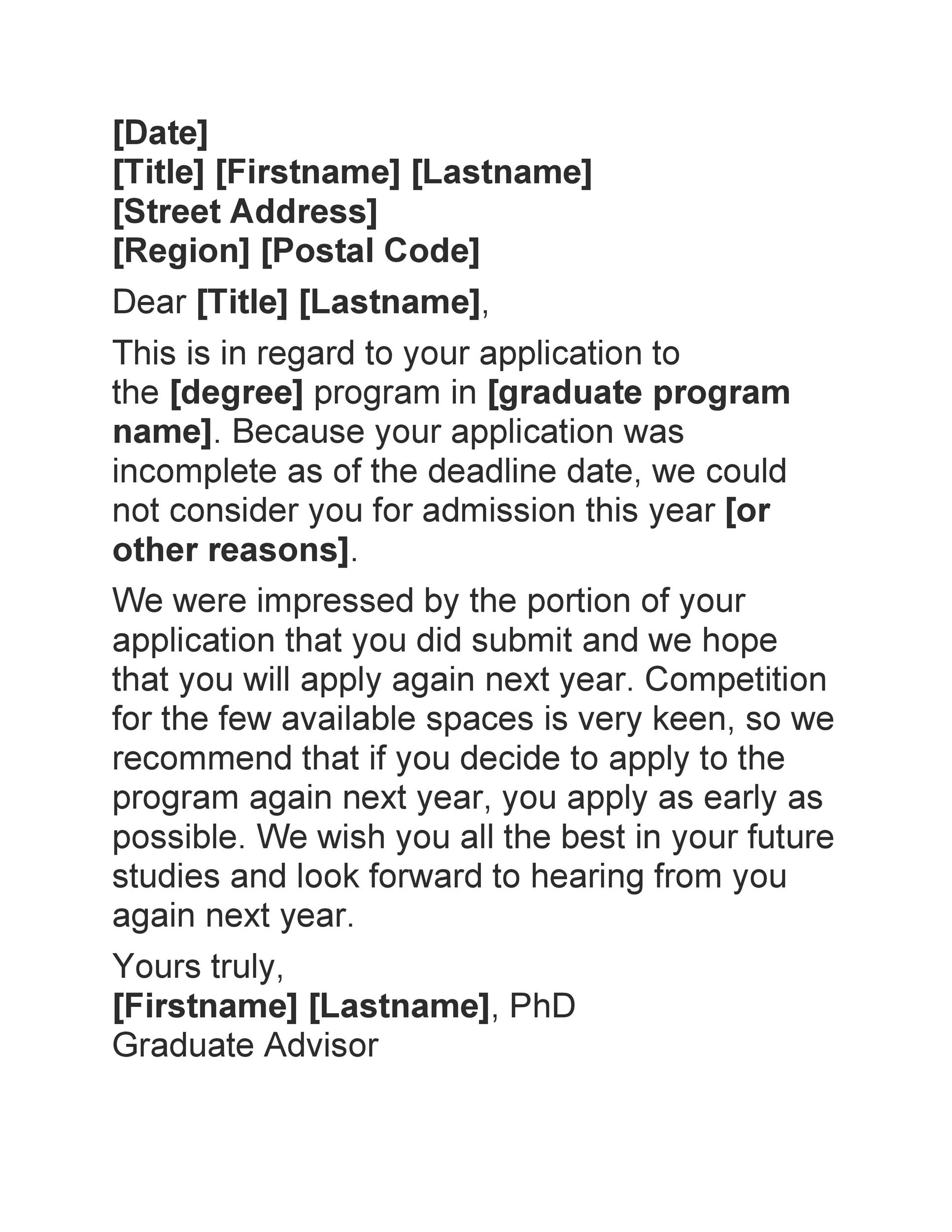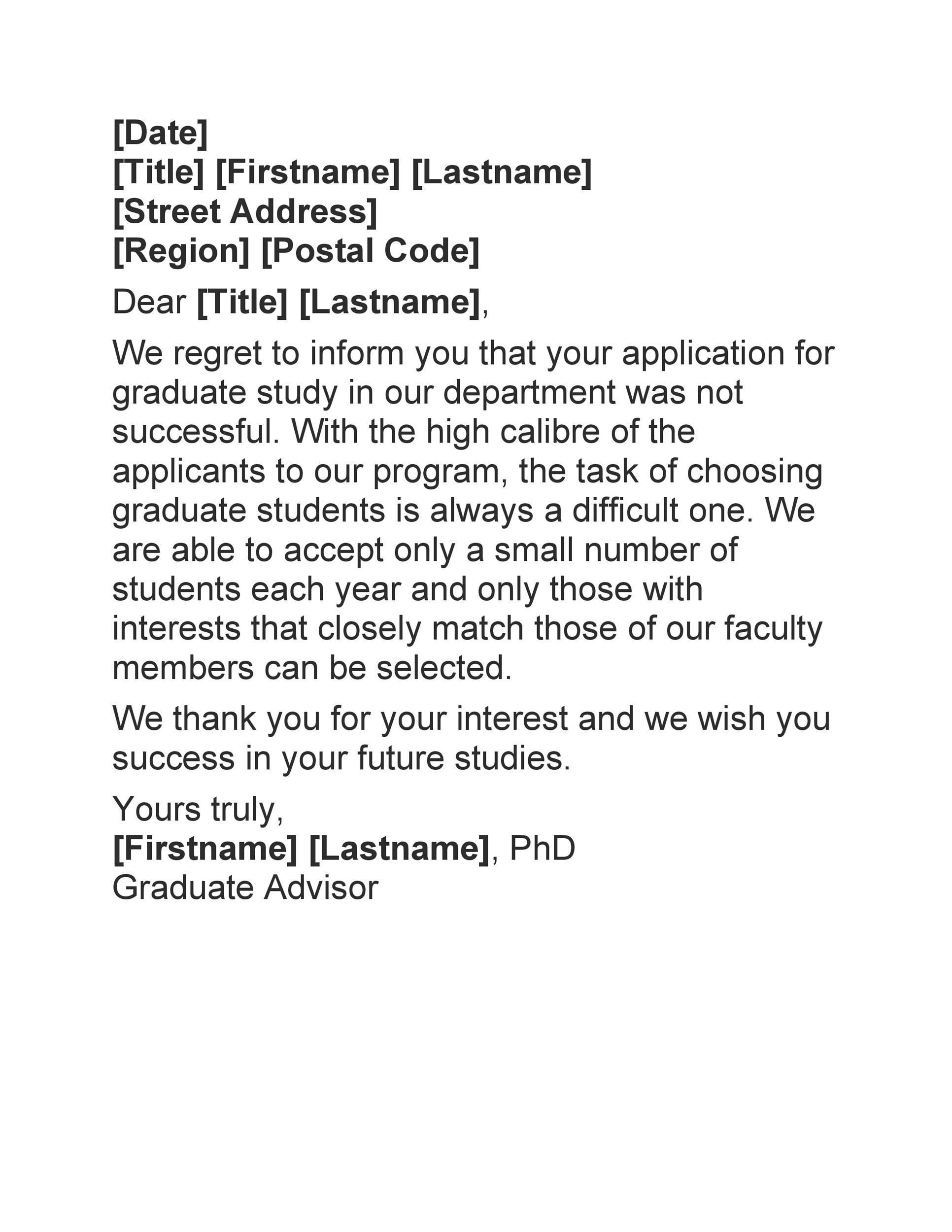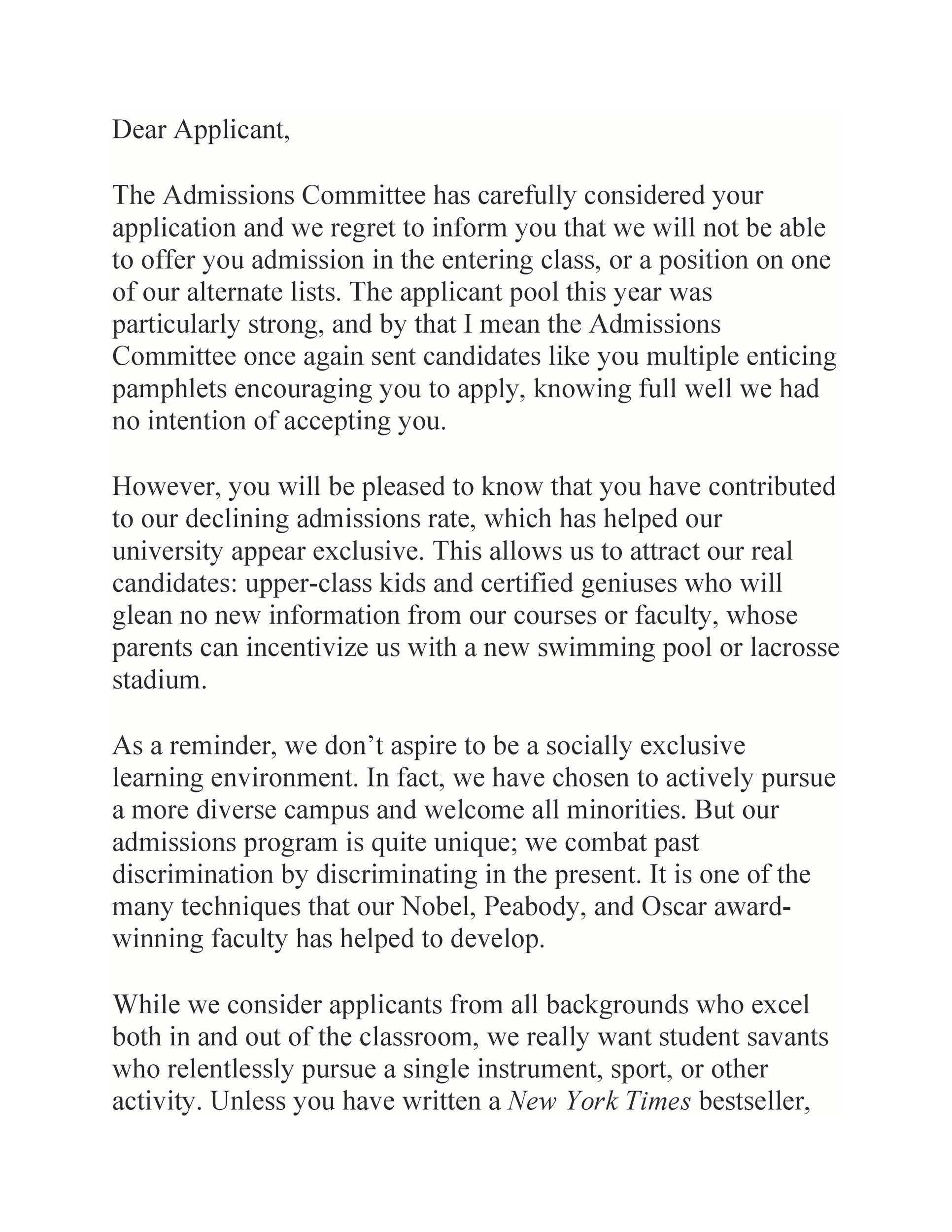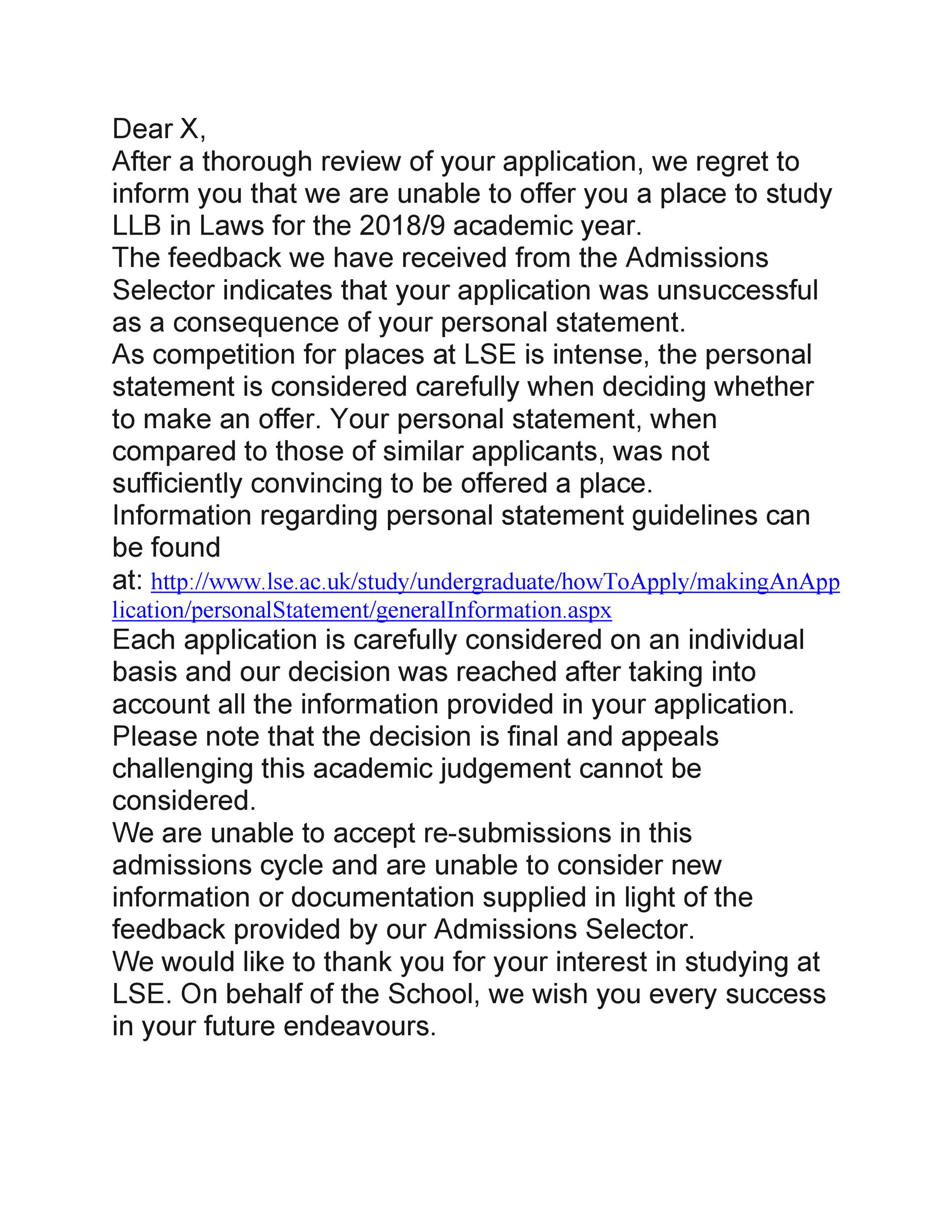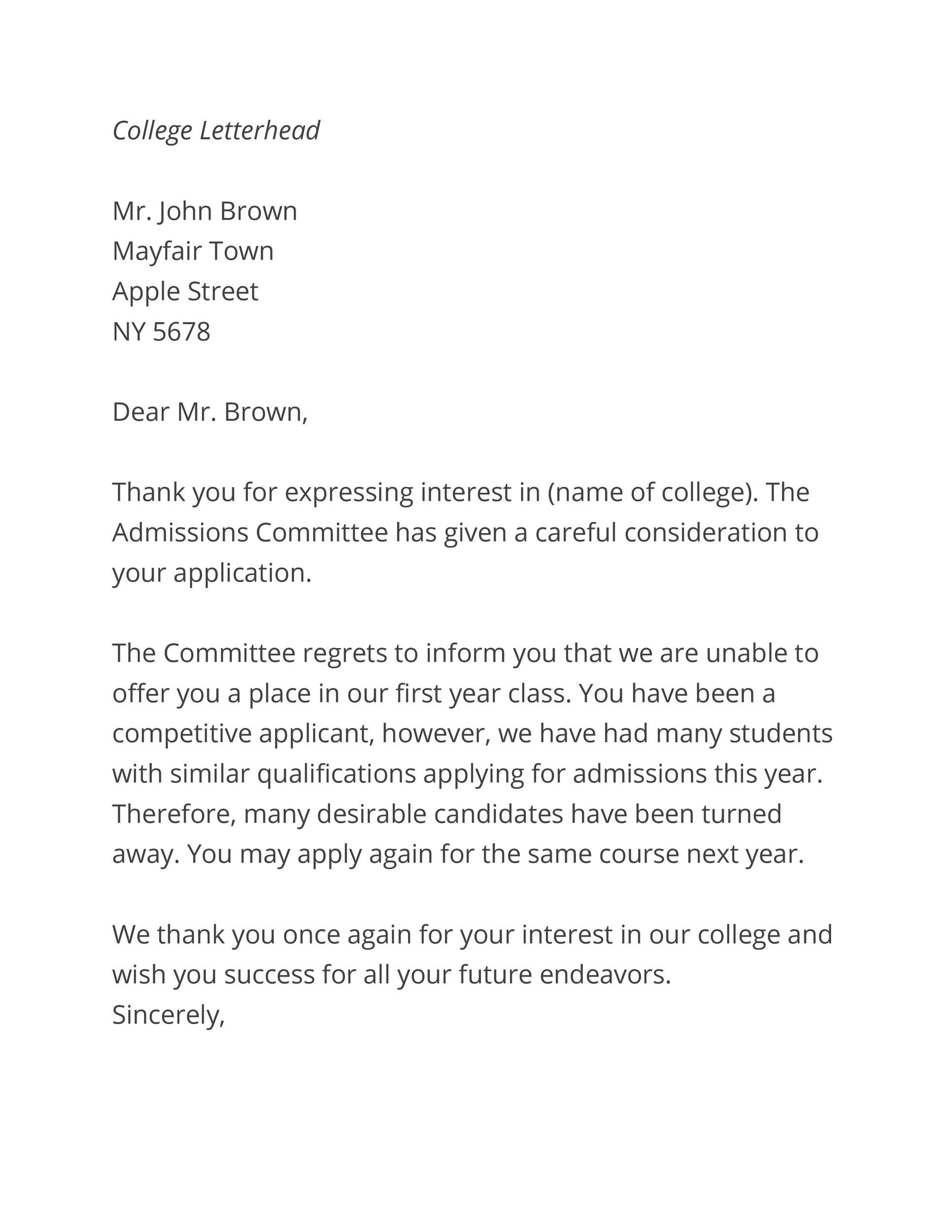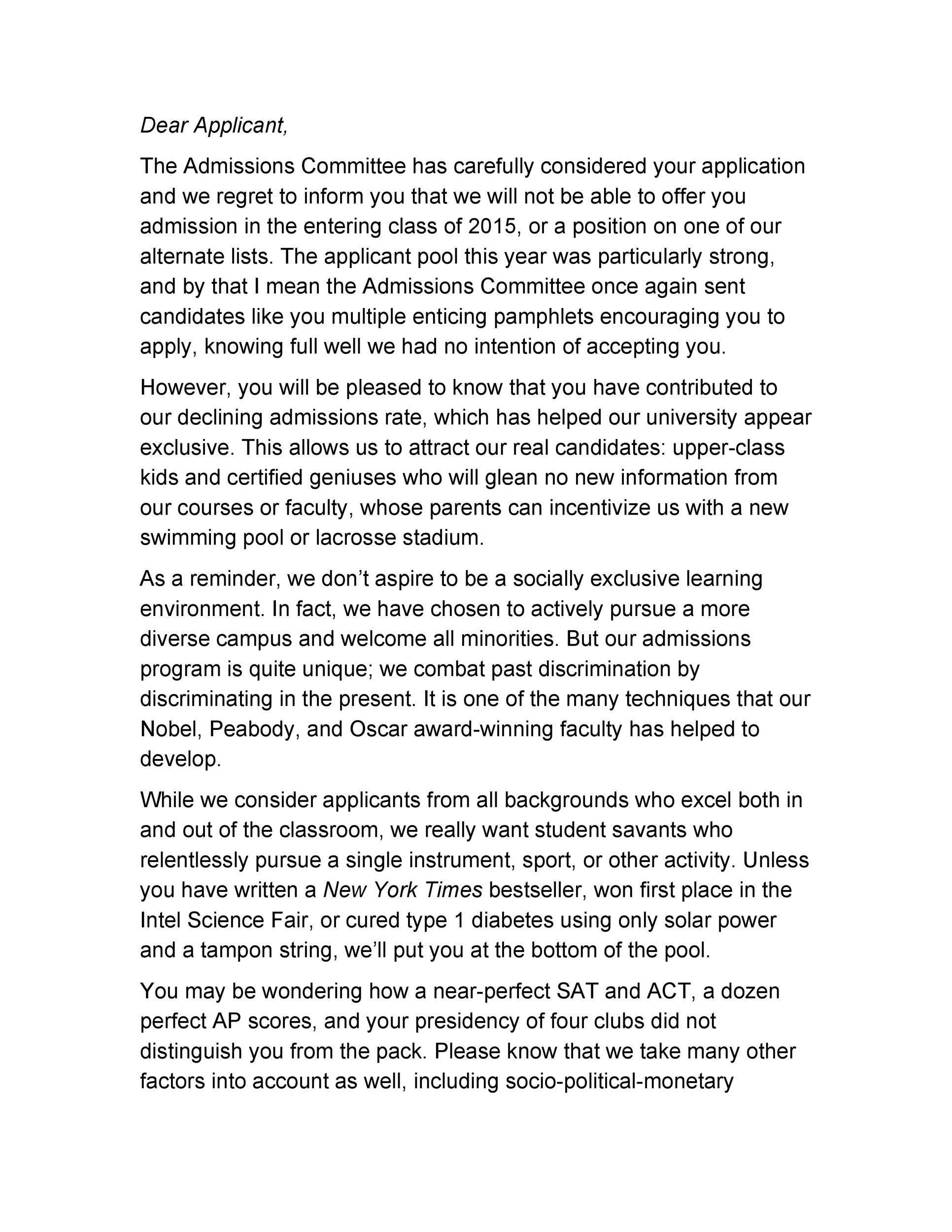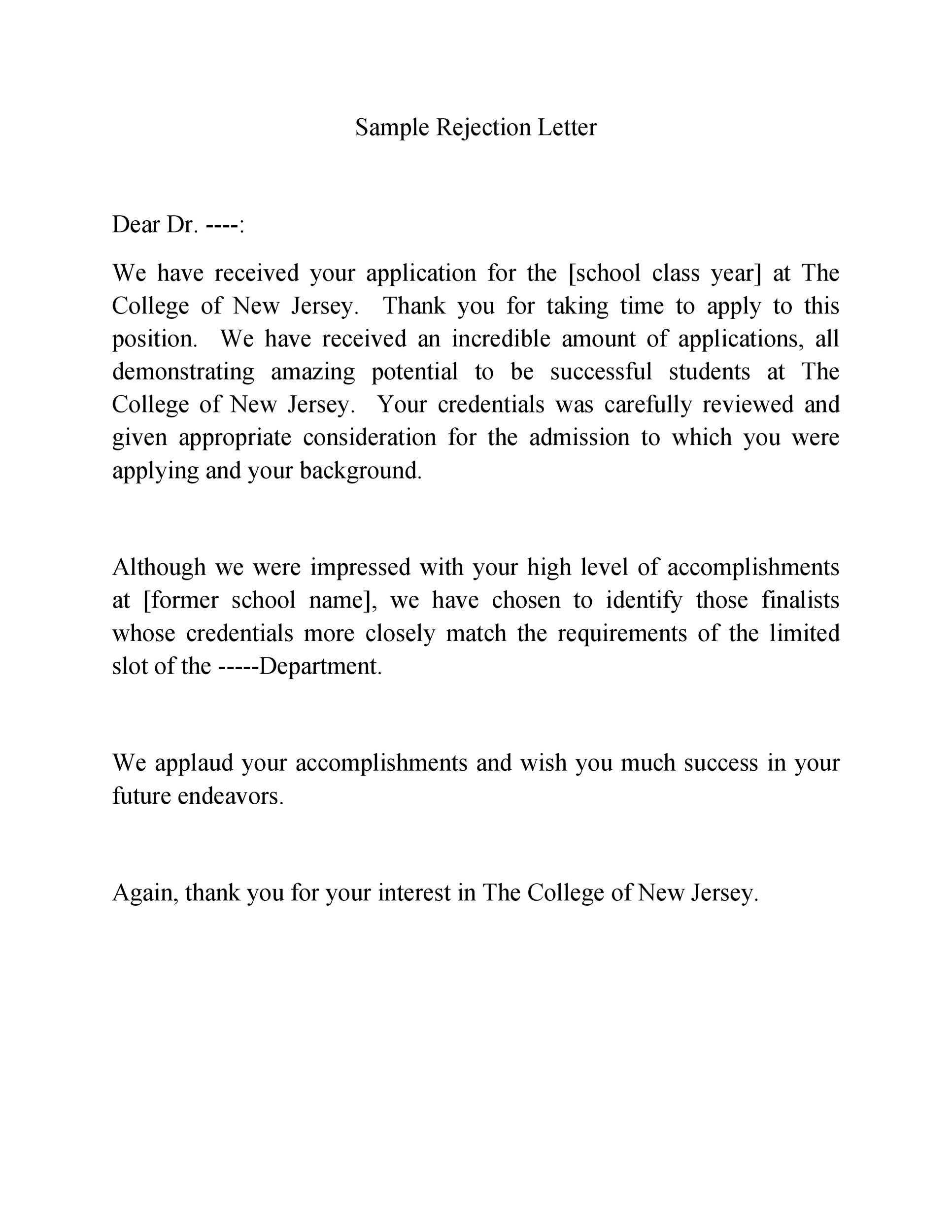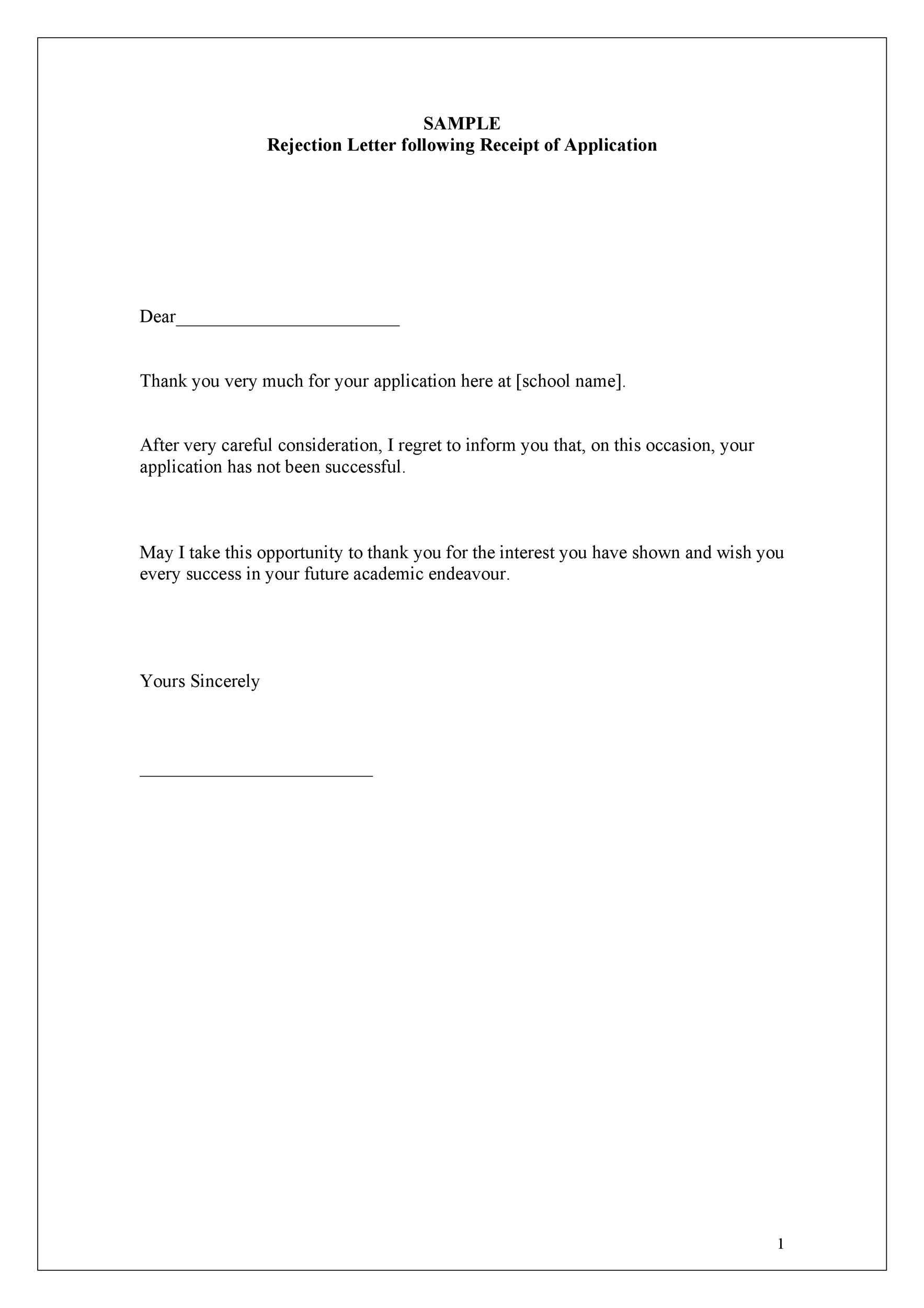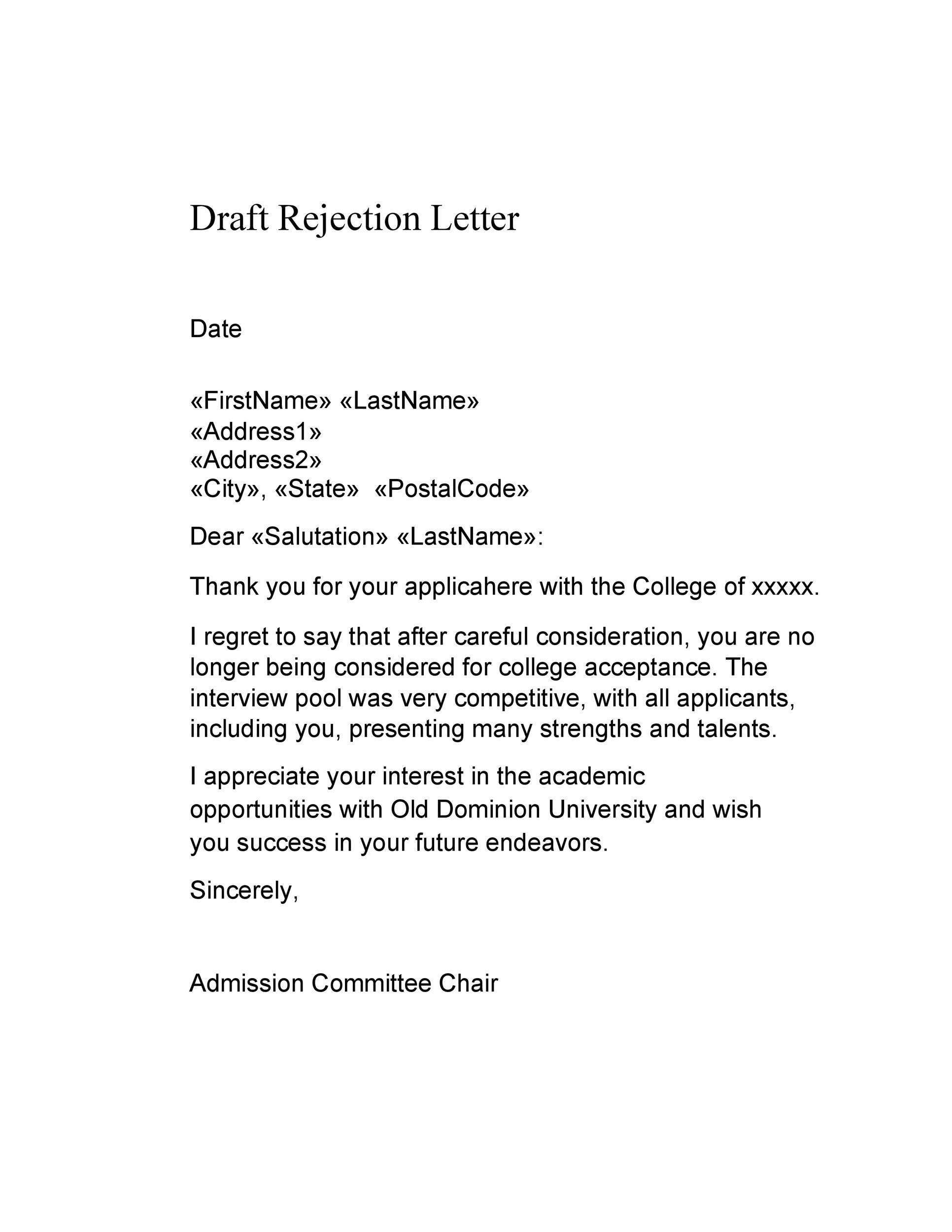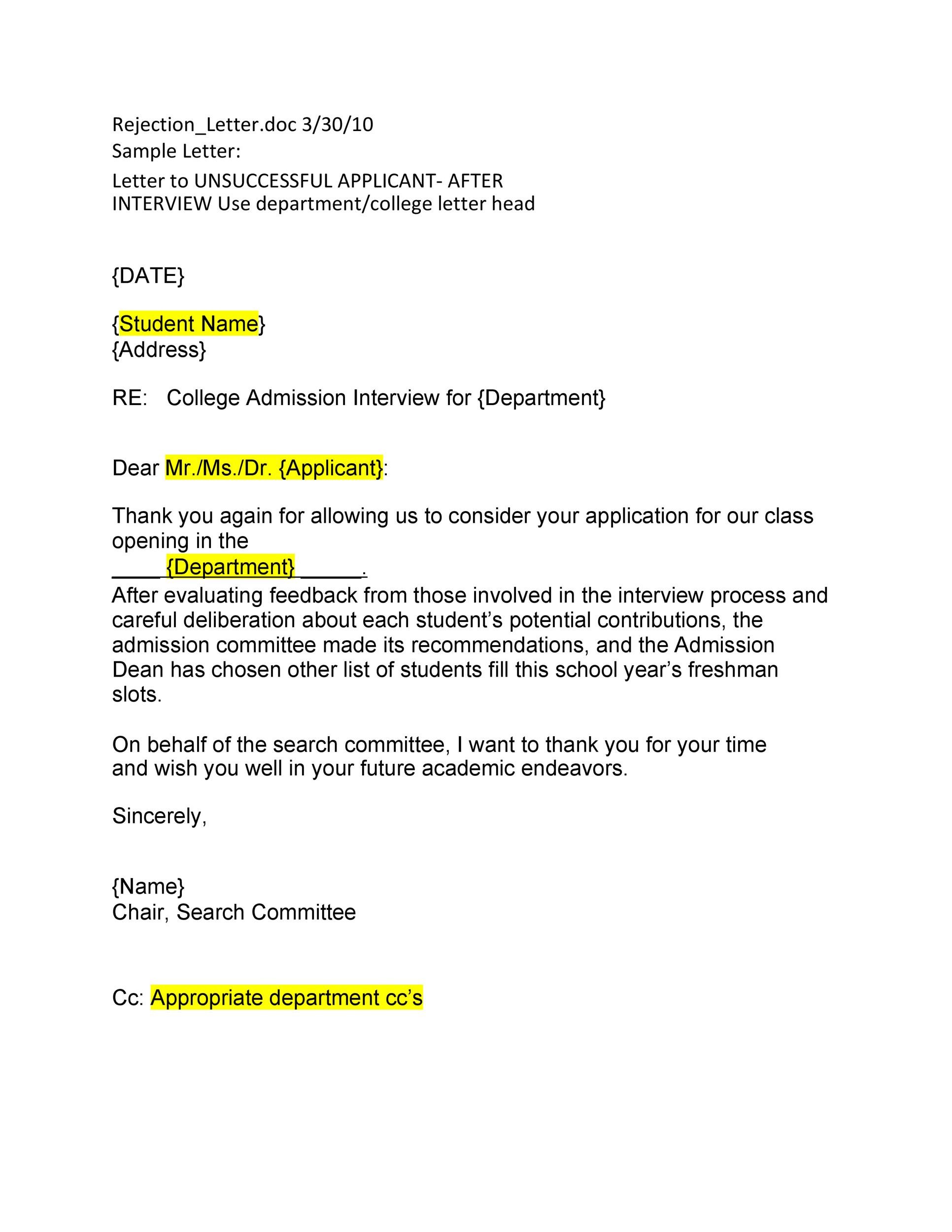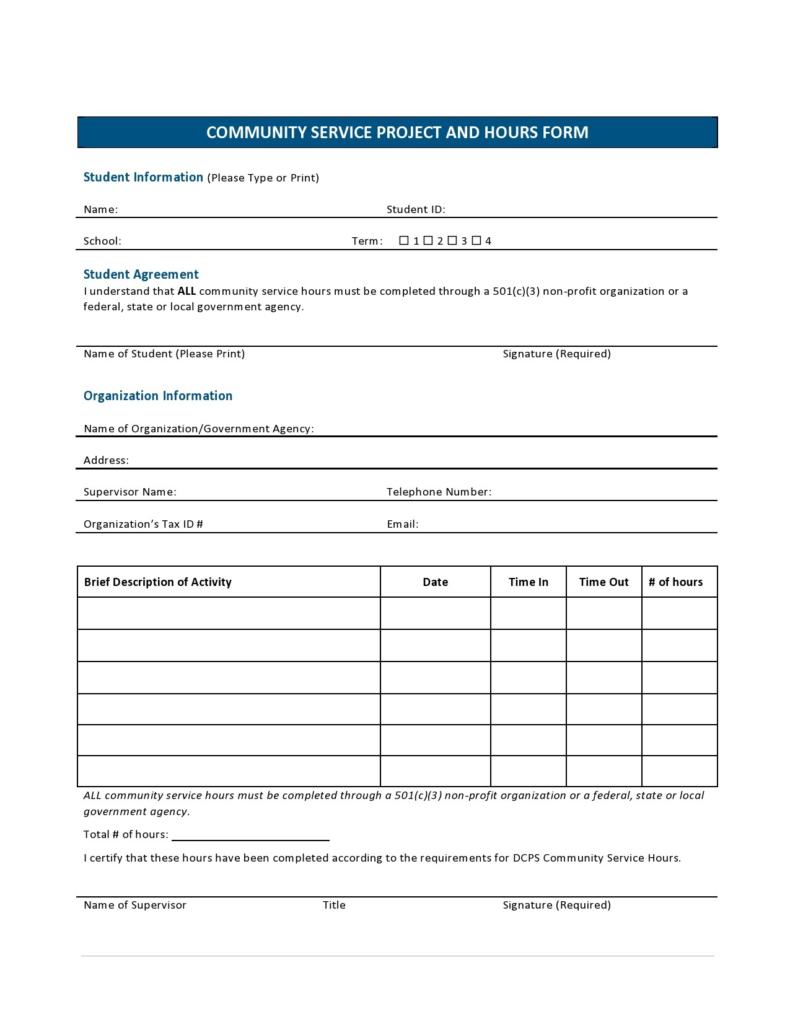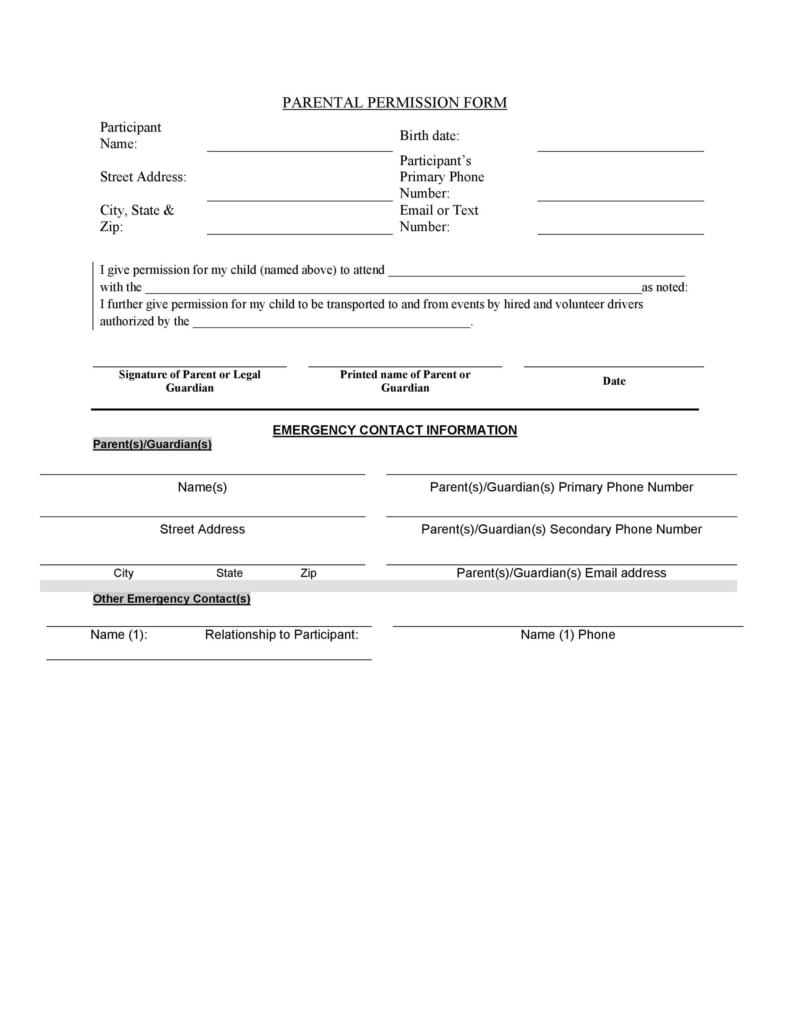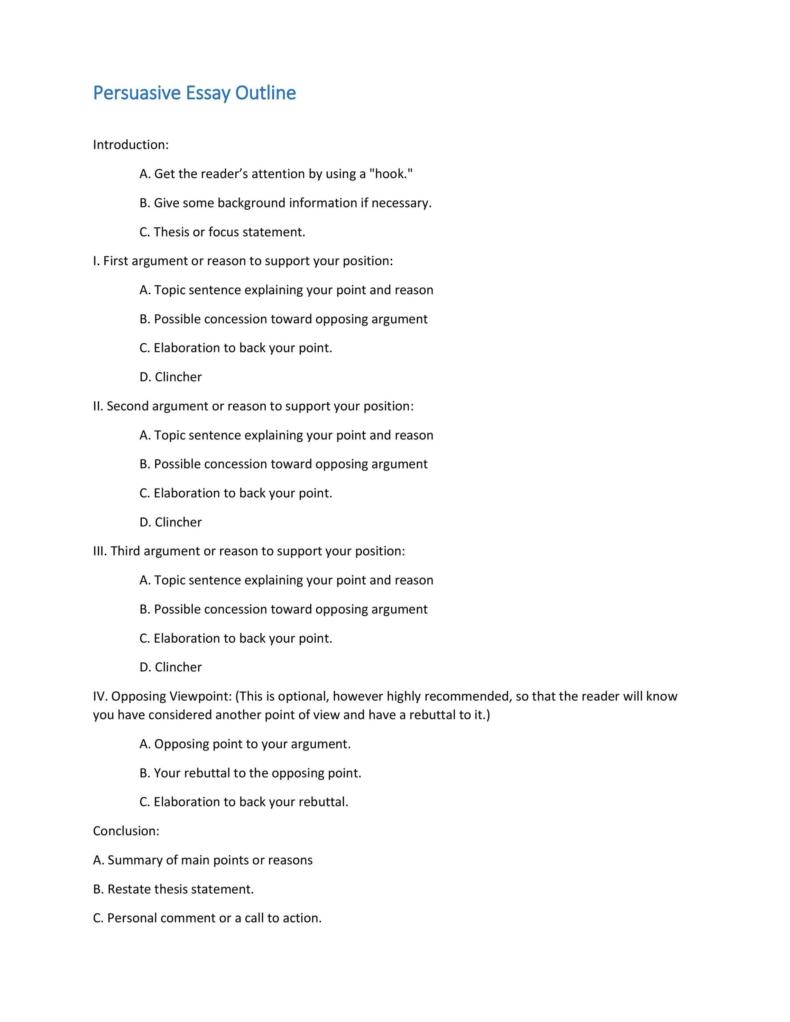Fresh out of high school and you’d start sending out applications to the colleges you consider the best, in hopes that you get admission. You have high expectations then you receive a response letter and the unthinkable happens – it’s a college rejection letter. Somehow, your world and dreams start to crumble. True, a rejection letter can hurt a lot but it also teaches you about what you may have done wrong.
Table of Contents
College Rejection Letters
What is the likelihood of getting a college rejection letter?
To dissect the situation, you should realize that there is always a possibility of receiving a college rejection letter, even from your top school choice. The reason for your college denial letter can vary depending on two main factors:
- The competitiveness of your college of choice.
- The strength of your college application.
On the onset, you should already have an idea of how hard it’s to get accepted to your chosen college. Then, there’s how strong your application is. Great application letters generally have these features:
- An impressively high GPA, along with a challenging and rigorous course load.
- High scores on assessment tests.
- An inspiring personal statement.
- A convincing letter of recommendation.
- An impressive curriculum vitae or resume, particularly one which showcases your ongoing passion and commitment to the field of your choice.
- A high rank in class if applicable.
If your dream colleges are those of the Ivy League or highly recommended competitive schools, then for certain you need to stand out from the other applicants. One of the best ways to accomplish this is to include impressive information in your application letter.
But only use achievements and other impressive skills backed with enough evidence to prove this. Together with an impressive GPA, test scores, class rank, and so on, these give you better odds to become a top candidate for the school.
Even with all these in your favor, you have to avoid creating an application that’s too well-rounded as this usually is the pitfall for many college applications. It might reduce your chances of getting accepted, resulting in a university rejection letter.
College Rejection Letter Samples
Things to keep in mind when you receive a college rejection letter
Should you receive a college rejection letter, don’t go into denial. It’s not the end of the world! Many who have received college rejection letter samples in the past have worked through their frustrations, applied to different schools, and were still able to do incredible things.
It is normal to feel depressed after you received a college denial letter, especially from the college you hoped for. It’s okay to feel sad but also remember these things:
- You’re not alone
It’s not even a few but thousands, who receive university rejection letters from their dream college. The percentage becomes even higher when it involves highly selective institutions. - Don’t take it personally
Don’t ever think that you got denied because the admission officers didn’t like you. There are many reasons for their denial, like not being academically prepared to perform well in college. In the Ivy League types, many applications don’t make the roster even the students are very academically-qualified.
In many colleges, they have a quota or a specific number of available seats for the incoming students. Admission committees try their best when accepting applicants based on many factors to come up with a class that’s “well-rounded.” Those who don’t make the cut receive a college rejection letter. - Try not to think about the “what ifs”
Do not dwell on these thoughts after you have received informed of rejection. Doing so won’t change the decision of the admission officers, so why fret about something you cannot remedy? Instead, find another school you can go to. - Celebrate when you receive acceptance letters
Instead of spending too much time on something beyond you, focus more on your victories. If you’re qualified, one college will come your way and you can celebrate that. Colleges won’t accept all applications and if you get admitted, that’s a victory. See this as an accomplishment. - Embrace the school which accepted you
Colleges always have some amazing things that they offer to their students. The one that accepts you won’t be an exception. Embrace the schools that accepted you and choose from among them the best one that will suit your needs. - Consider the other options
Should you receive a university rejection letter from the first college of your choice, there are always options available:
Community College
Enroll here and take some classes on general education. It’s not expensive and is a great way to build your academic records up. Later, you may transfer to a university to take a four-year course.
Consider taking a “gap year”
A gap year gives you the opportunity to, learn something new, take some classes, do some volunteer work, travel, take up an internship, and more. However, if you’re still considering to reapply, it’s suggested to consult the admission officer or counselor at the college you have your eyes on and find out if a gap year is a feasible option.
Try applying to other schools
Don’t worry about missing the admission deadline. There are still several institutions which accept applications all throughout the year. Some even offer “rolling” admissions. Try these, maybe you’ll find something interesting here.
A rejection letter doesn’t mean the end of your dreams but a just detour on your way to the final goal, a college degree. Although detours aren’t the usual venues you have planned for your ambition, sometimes you will find them more accommodating when getting to your destination. Forget denials, embrace the different options as you move forward.
College Denial Letters
Moving past your college rejection letter
Never think of the college rejection letter as an end to what you have aspired for. Just think of it as a speed bump on the road and a part of the admission process. Don’t look back. Instead, look forward and focus on other things.
Once you have gotten over your college rejection letter sample, you have two choices. First, consider another college. Second, give up entirely on your college endeavor. The latter, of course, is just a sign of overreacting.
Aside from your first few choices, both from which you received university rejection letters, you still have other choices in the form of other schools you can apply to.
After getting turned down by your first choices, you would have a different perspective. You might also discover that focusing too much on your early choices have clouded your capacity to recognize that the “lower” choices were actually the better ones. Here are some steps to help you move forward:
- Set an appointment with the admission offices of other schools
You can call the admissions office, but only if you haven’t applied yet. Request to speak with one of the people in charge of late applications. - Try to appeal the decision
This is definitely not good advice for everyone, especially if your application doesn’t have any significant changes in terms of test scores, grades, and other information on your application. However, if you can demonstrate in the second semester that you have studied harder and made yourself more involved, then this is one option you may want to consider. - Take some time off
A college rejection letter can be a sign that you’re not yet ready for the rigorous work involved with college life. Maybe you need a break. In fact, many students today take time off before going to college. This is what’s known as the “gap year.”
Europeans just out of high school have made the “gap year” popular and is also becoming popular in the USA. Instead of immediately diving into college, students now opt to travel or take some type of internship first.
Those who have taken this time off say they feel more prepared for college. Consequently, they are more prepared to meet challenges in the real world after college. Consider these when planning to take a “gap year”:
First, do your research to determine if this is a good decision.
Second, do some research about gap year programs. The internet always offers information on whatever you need.
Third, speak to your parents about this plan of yours. Perhaps this is the hardest part but sooner or later, you must have this conversation with them. - Transfer to the school of your choice
At times, a university rejection letter from your dream college is not the end of your quest. If you can prove your worth by making a huge statement for the admissions committee, you can reapply after a year or two, but this time as a transferring student.
For a reconsideration, you need to perform extremely well at a community college or at a four-year college. This means that you should have stellar performances in terms of grades and credits that you can transfer easily along with involvement in volunteerism and extracurricular activities.
You also have to inform your current college that you might transfer after one or two years so they can help lay the necessary groundwork by taking classes that makes transfer easier between schools. Furthermore, they can come up with a timeline to make sure you have a transfer experience that’s successful.

